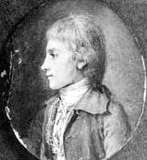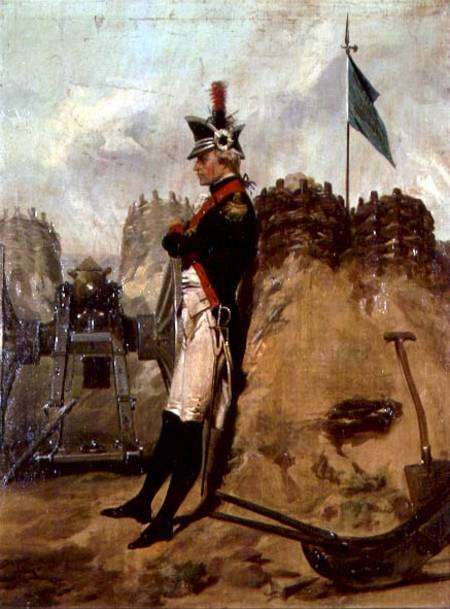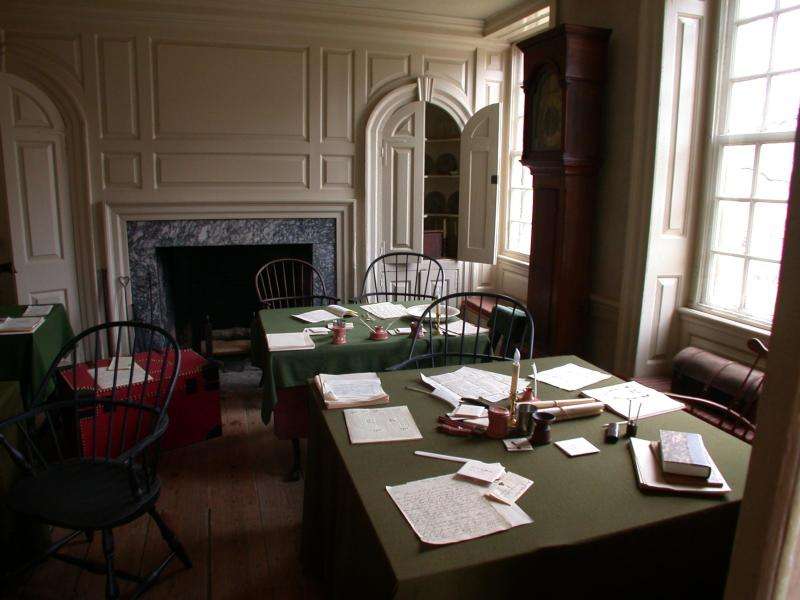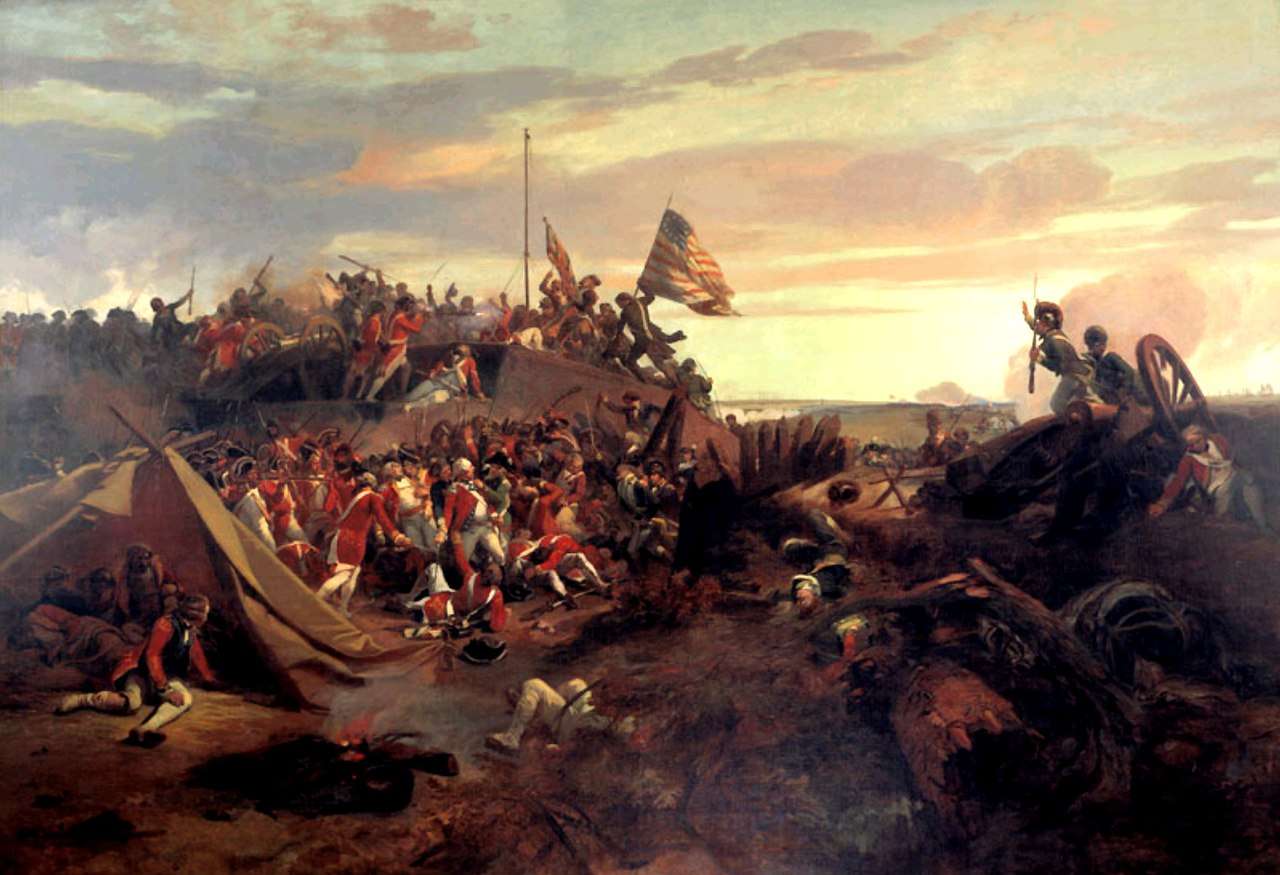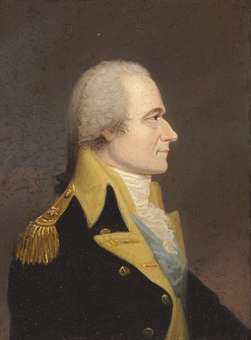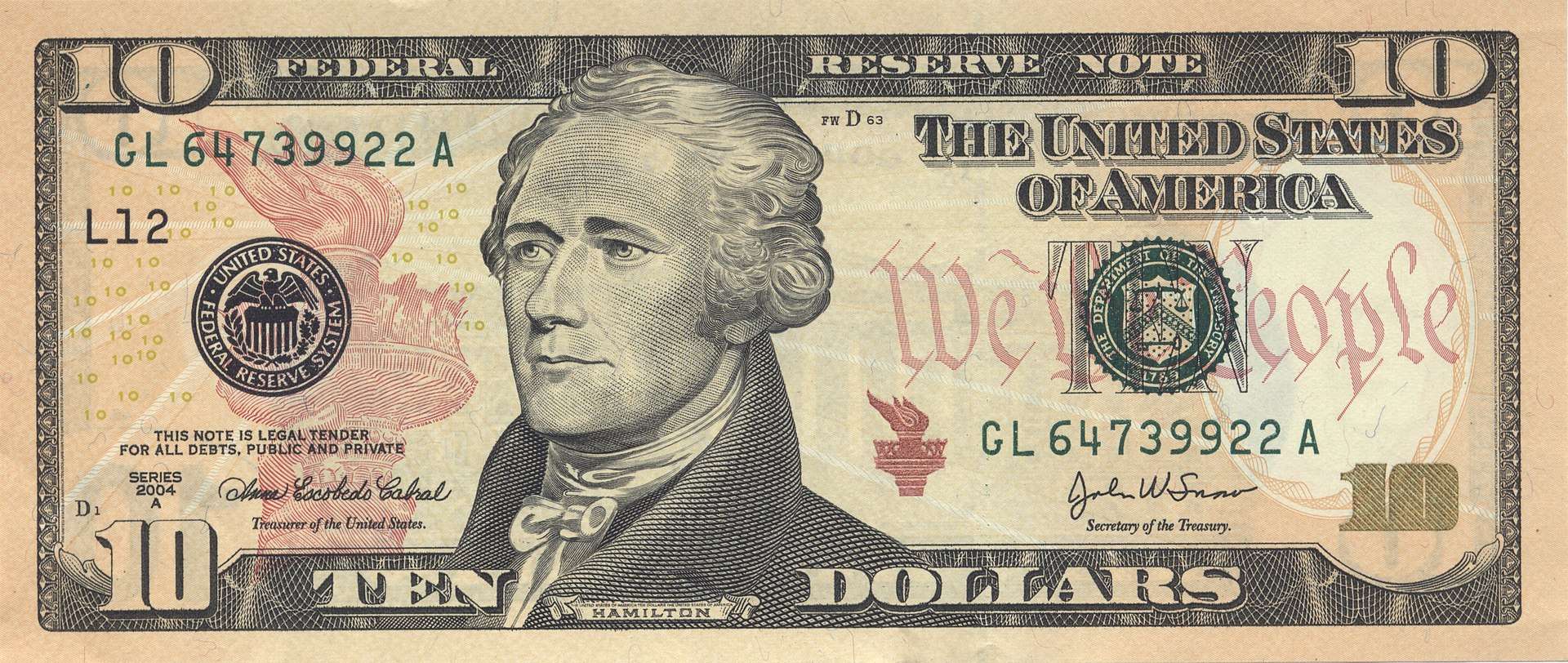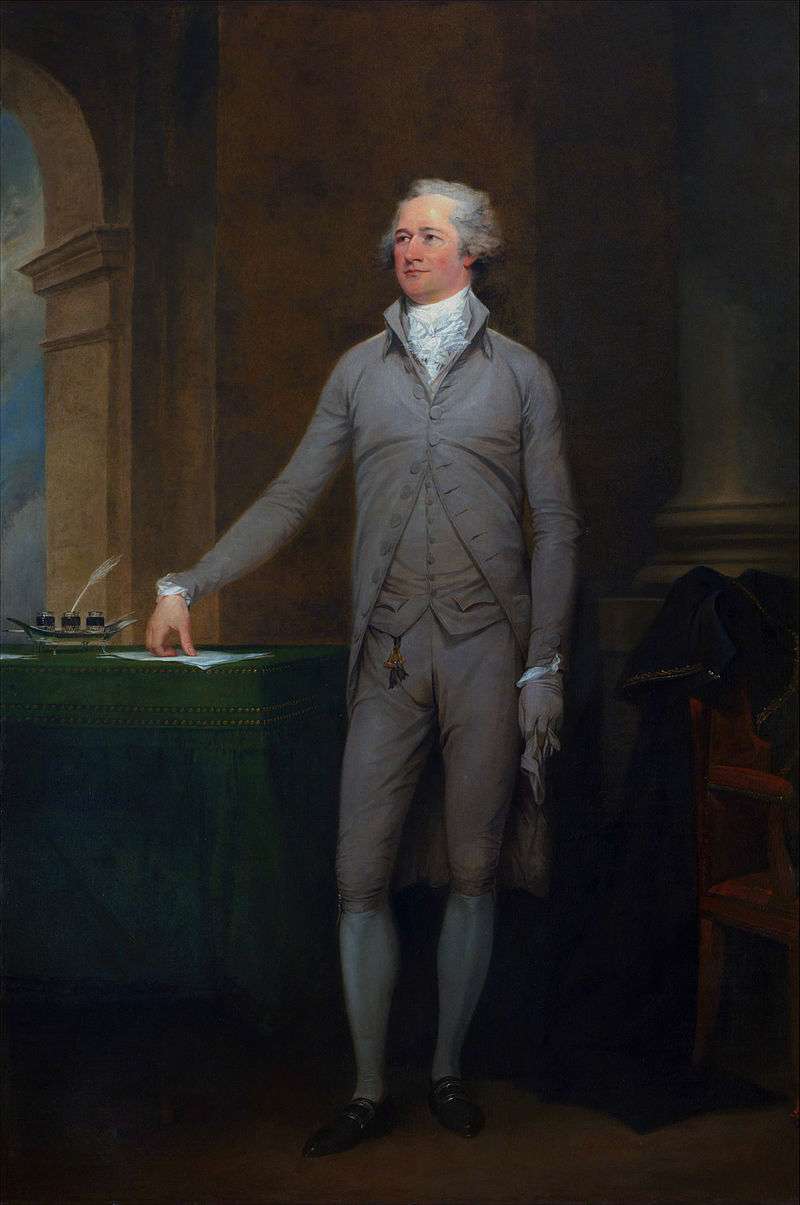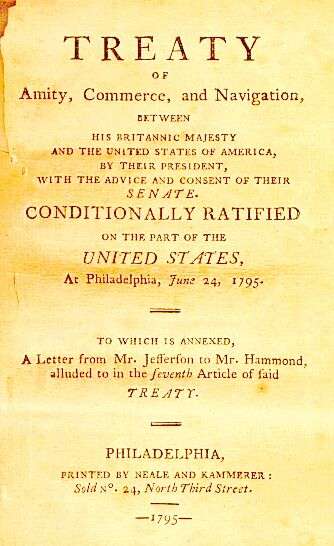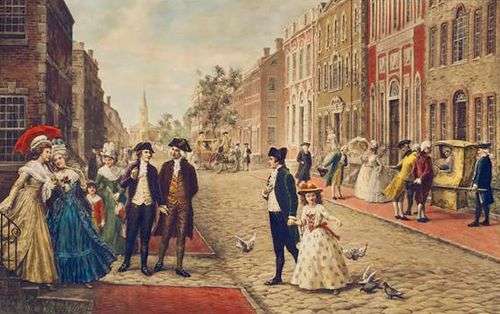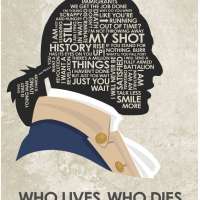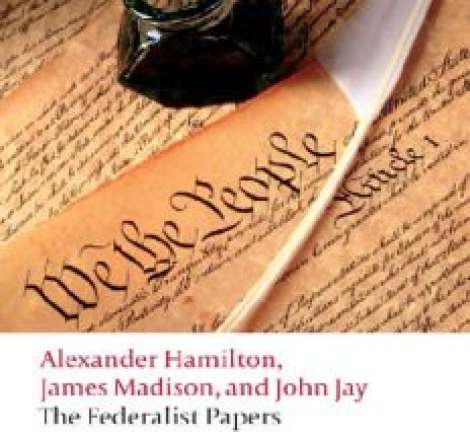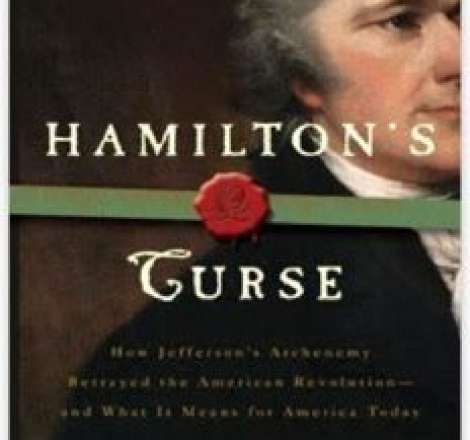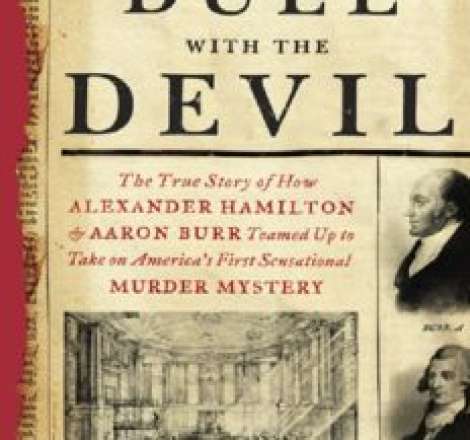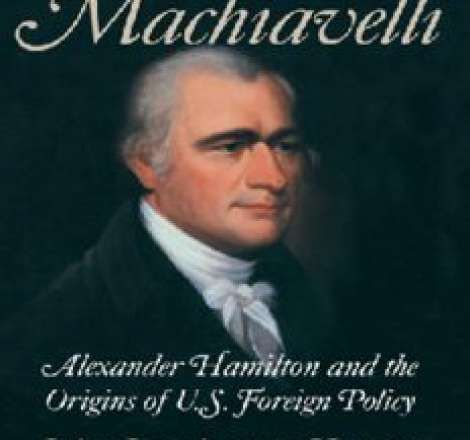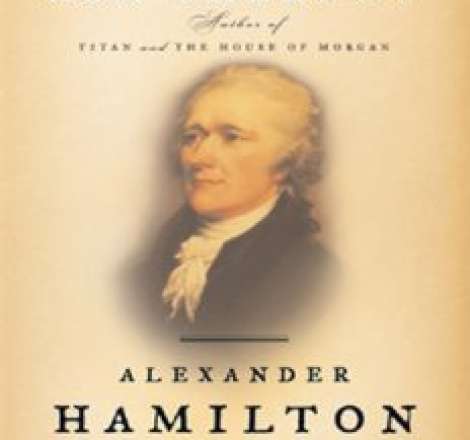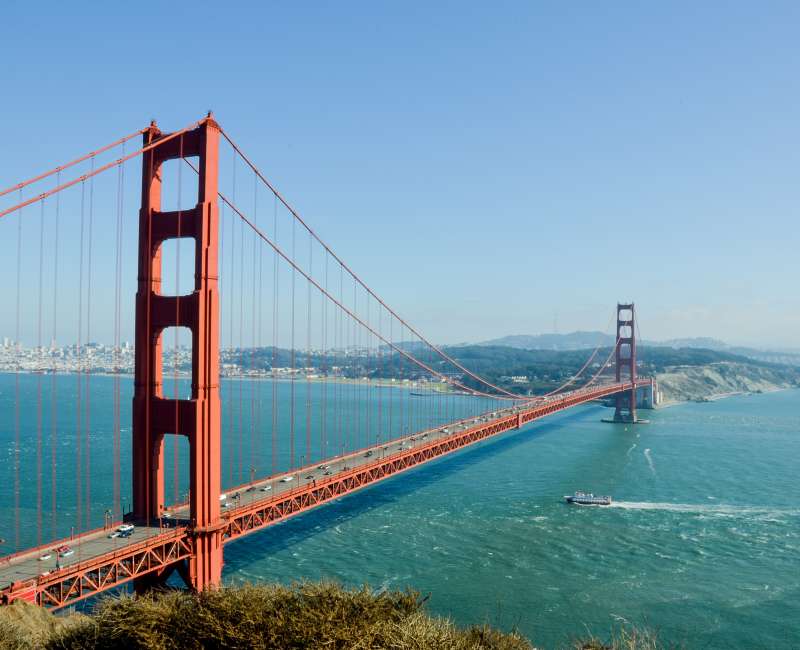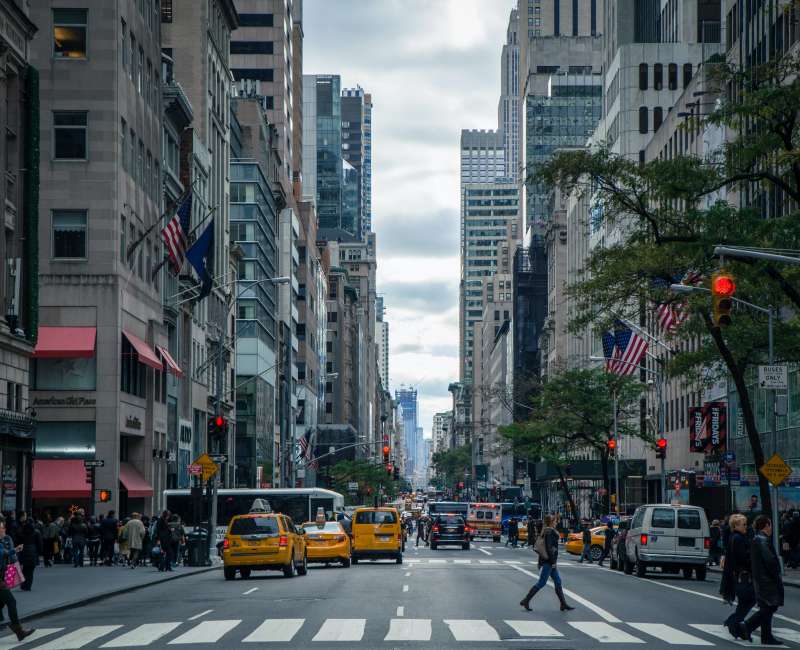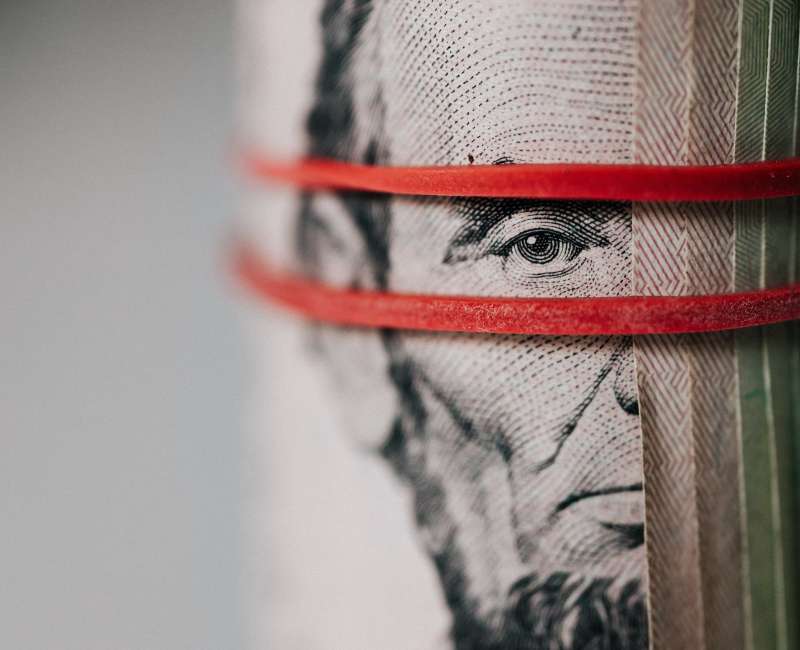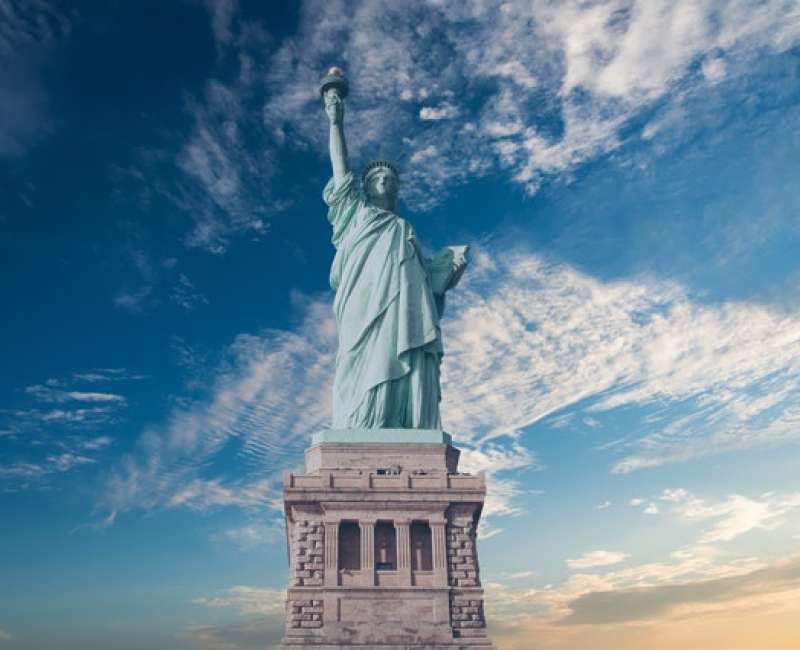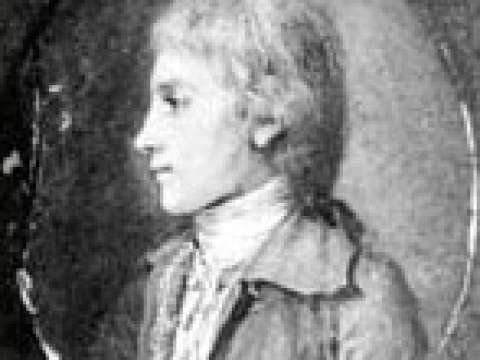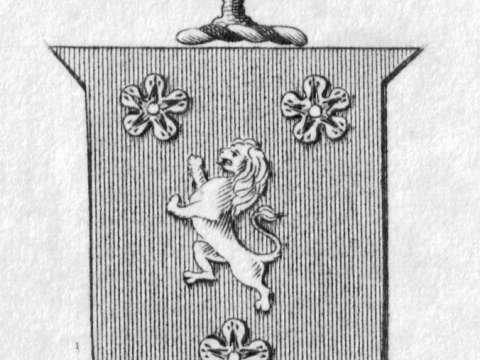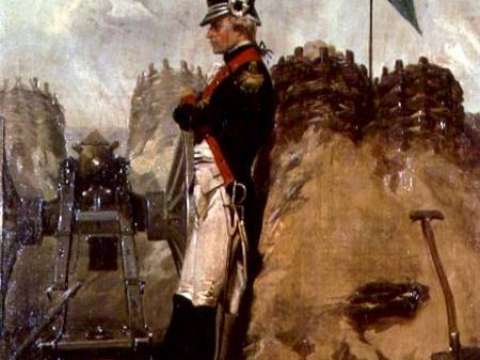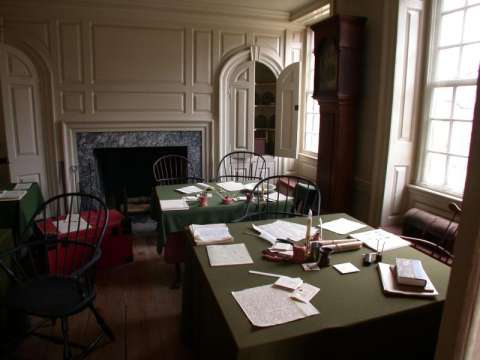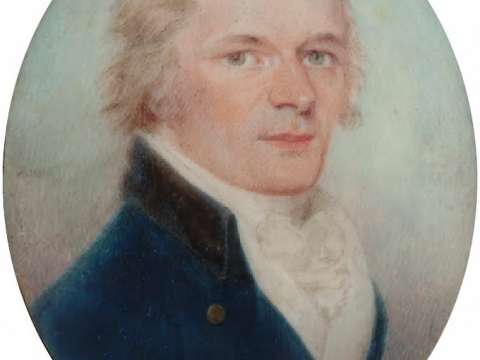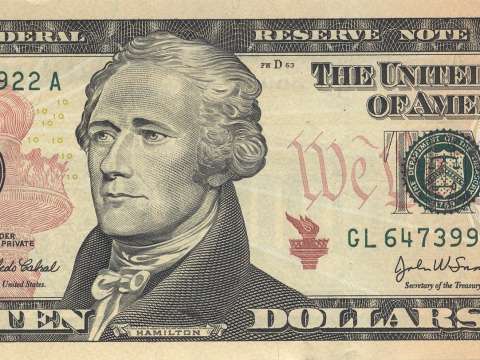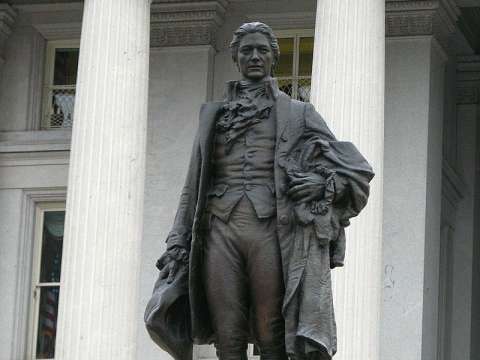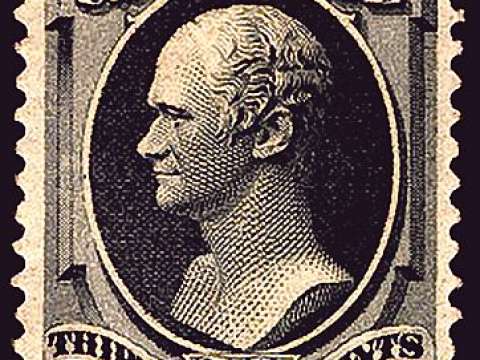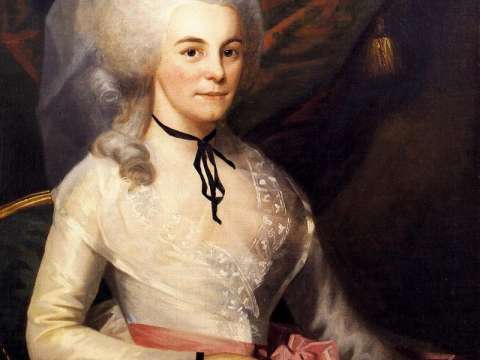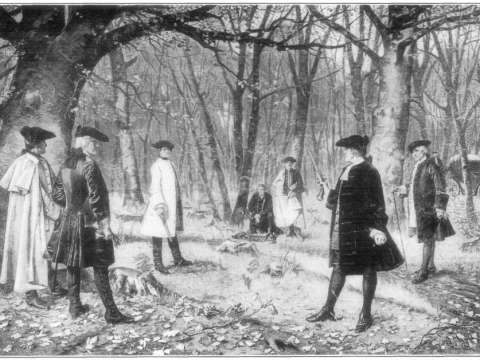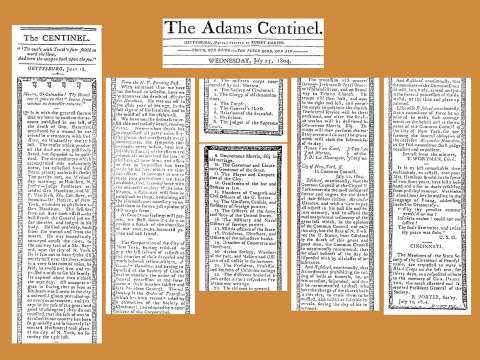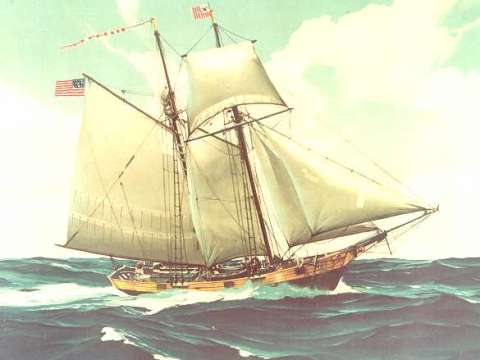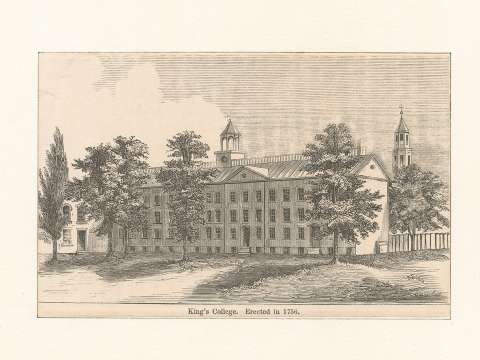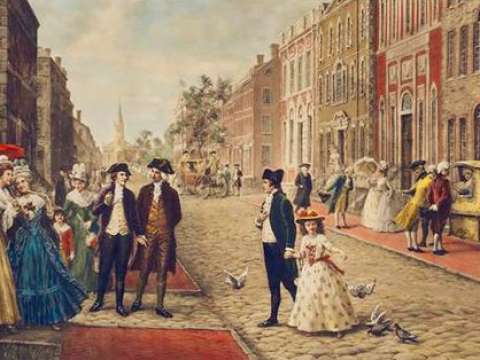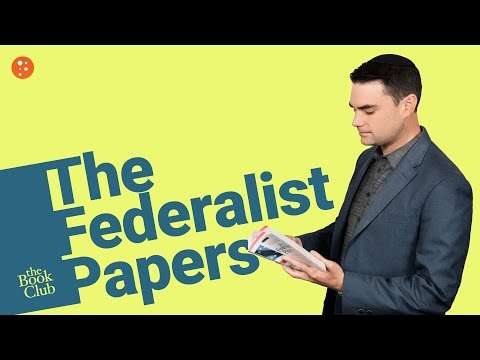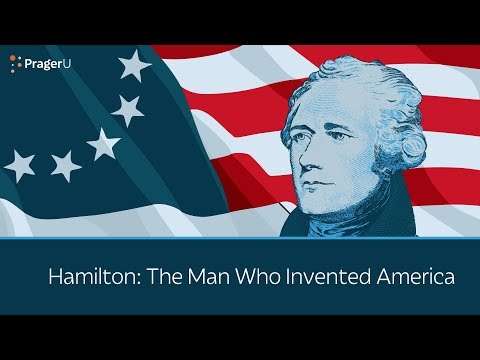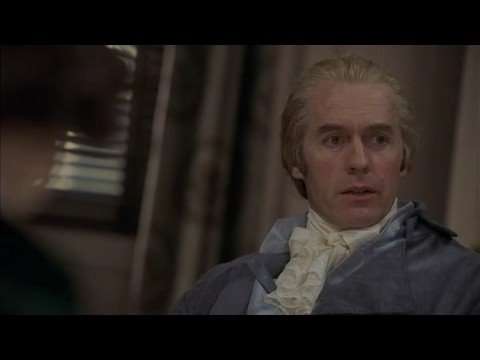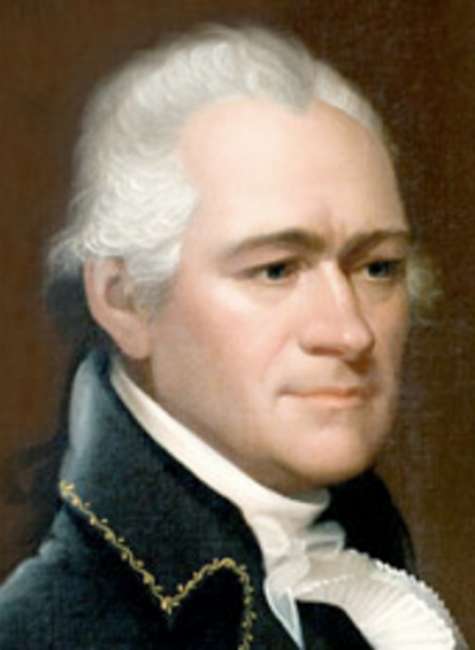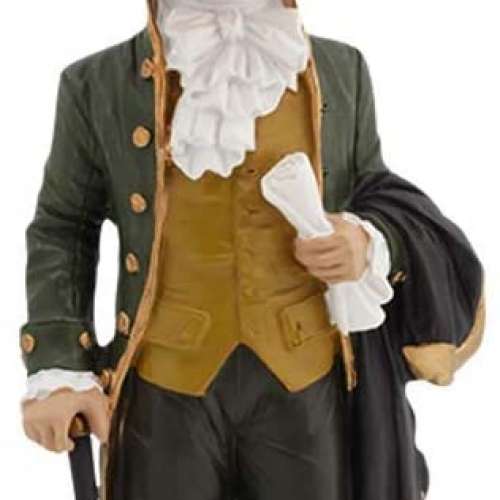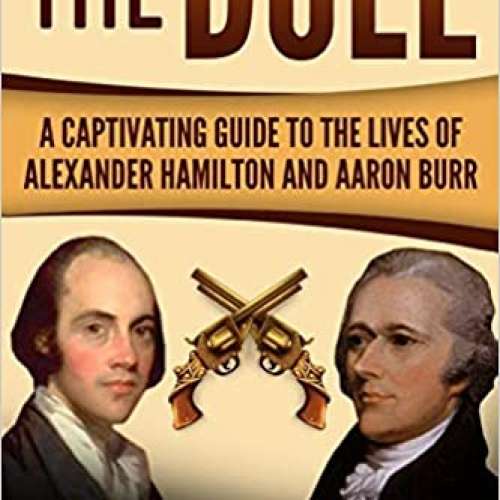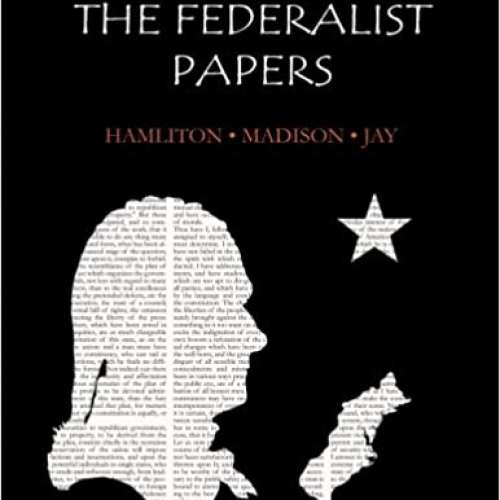

Alexander Hamilton (1755-1804)
Those who stand for nothing fall for everything.
Alexander Hamilton was an American statesman, politician, legal scholar, military commander, lawyer, banker, and economist. He was one of the Founding Fathers of the United States. He was an influential interpreter and promoter of the U.S. Constitution, as well as the founder of the nation's financial system, the Federalist Party, the United States Coast Guard, and the New York Post newspaper. As the first secretary of the treasury, Hamilton was the main author of the economic policies of George Washington's administration. He took the lead in the federal government's funding of the states' debts, as well as establishing the nation's first two de facto central banks, the Bank of North America and the First Bank of the United States, a system of tariffs, and friendly trade relations with Britain. His vision included a strong central government led by a vigorous executive branch, a strong commercial economy, government-controlled banks, support for manufacturing, and a strong military.
Hamilton was born out of wedlock in Charlestown, Nevis. He was orphaned as a child and taken in by a prosperous merchant. When he reached his teens, he was sent to New York to pursue his education. He took an early role in the militia as the American Revolutionary War began. In 1777, he became a senior aide to General Washington in running the new Continental Army. After the war, he was elected as a representative from New York to the Congress of the Confederation. He resigned to practice law and founded the Bank of New York before entering politics. Hamilton was a leader in seeking to replace the weak confederal government under the Articles of Confederation; he led the Annapolis Convention of 1786, which spurred Congress to call a Constitutional Convention in Philadelphia. He helped ratify the Constitution by writing 51 of the 85 installments of The Federalist Papers, which are still used as one of the most important references for Constitutional interpretation.
Hamilton led the Treasury Department as a trusted member of President Washington's first Cabinet. Hamilton successfully argued that the implied powers of the Constitution provided the legal authority to fund the national debt, to assume states' debts, and to create the government-backed Bank of the United States the First Bank of the United States. These programs were funded primarily by a tariff on imports, and later by a controversial whiskey tax. He opposed friendly relations with the French revolutionaries. Hamilton's views became the basis for the Federalist Party, which was opposed to the Democratic-Republican Party led by Thomas Jefferson and James Madison. In 1795, he returned to the practice of law in New York. He called for mobilization against the French First Republic in 1798–99 under President John Adams, and became Commanding General of the U.S. Army, which he reconstituted, modernized, and readied for war. The army did not see combat in the Quasi-War, and Hamilton was outraged by Adams' diplomatic approach to the crisis with France. His opposition to Adams' re-election helped cause the Federalist Party defeat in 1800. Jefferson and Aaron Burr tied for the presidency in the electoral college, and Hamilton helped to defeat Burr, whom he found unprincipled, and to elect Jefferson despite philosophical differences.

Hamilton continued his legal and business activities in New York City, and was active in ending the legality of the international slave trade. Vice President Burr ran for governor of New York State in 1804, and Hamilton campaigned against him as unworthy. Taking offense, Burr challenged him to a duel on July 11, 1804, in which Burr shot and mortally wounded Hamilton, who died the following day. Hamilton is generally regarded as an astute and intellectually brilliant politician and financier, if often impetuous. His ideas are credited with laying the foundation for American government and finance.
Childhood in the Caribbean
Alexander Hamilton was born and spent part of his childhood in Charlestown, the capital of the island of Nevis in the Leeward Islands then part of the British West Indies. Hamilton and his older brother James Jr. 1753–1786 were born out of wedlock to Rachael Fawcett, a married woman of half-British and half-French Huguenot descent, and James A. Hamilton, a Scotsman who was the fourth son of Alexander Hamilton, the laird of Grange in Ayrshire. Speculation that Hamilton's mother was of mixed race, though persistent, is not substantiated by verifiable evidence. Rachael Fawcett was listed as white on tax rolls.
It is not certain whether Hamilton's birth was in 1755 or 1757. Most historical evidence, after Hamilton's arrival in North America, supports the idea that he was born in 1757, including Hamilton's own writings. Hamilton listed his birth year as 1757 when he first arrived in the Thirteen Colonies, and celebrated his birthday on January 11. In later life, he tended to give his age only in round figures. Historians accepted 1757 as his birth year until about 1930, when additional documentation of his early life in the Caribbean was published, initially in Danish. A probate paper from St. Croix in 1768, drafted after the death of Hamilton's mother, listed him as 13 years old, which has caused some historians since the 1930s to favor a birth year of 1755.

Historians have speculated on possible reasons for two different years of birth to have appeared in historical documents. If 1755 is correct, Hamilton might have been trying to appear younger than his college classmates, or perhaps wished to avoid standing out as older. If 1757 is correct, the single probate document indicating a birth year of 1755 may have simply included an error, or Hamilton might once have given his age as 13 after his mother's death in an attempt to appear older and more employable. Historians have pointed out that the probate document contained other proven inaccuracies, demonstrating it was not entirely reliable. Richard Brookhiser noted that "a man is more likely to know his own birthday than a probate court."
Hamilton's mother had been married previously to Johann Michael Lavien, a Danish or German merchant, on St. Croix in the Virgin Islands, then ruled by Denmark. They had one son, Peter Lavien. In 1750, Faucette left her husband and first son; then traveled to Saint Kitts where she met James Hamilton. Hamilton and Faucette moved together to Nevis, her birthplace, where she had inherited a seaside lot in town from her father.
James Hamilton later abandoned Rachael Fawcett and their two sons, James Jr. and Alexander, allegedly to "spar a charge of bigamy... after finding out that her first husband intend to divorce her under Danish law on grounds of adultery and desertion." Thereafter, Rachael moved with her two children to St. Croix, where she supported them by keeping a small store in Christiansted. She contracted yellow fever and died on February 19, 1768, at 1:02 am, leaving Hamilton orphaned. This may have had severe emotional consequences for him, even by the standards of an 18th-century childhood. In probate court, Faucette's "first husband seized her estate" and obtained the few valuables that she had owned, including some household silver. Many items were auctioned off, but a friend purchased the family's books and returned them to Hamilton.
Hamilton became a clerk at Beekman and Cruger, a local import-export firm that traded with New York and New England. He and James Jr. were briefly taken in by their cousin Peter Lytton; however, Lytton took his own life in July 1769, leaving his property to his mistress and their son, and the Hamilton brothers were subsequently separated. James apprenticed with a local carpenter, while Alexander was given a home by Nevis merchant Thomas Stevens. Some clues have led to speculation that Stevens was Alexander Hamilton's biological father: his son Edward Stevens became a close friend of Hamilton, the two boys were described as looking much alike, both were fluent in French and shared similar interests. However, this allegation, mostly based on the comments of Timothy Pickering on the resemblance between the two men, has always been vague and unsupported. Rachael Fawcett had been living on St. Kitts and Nevis for years at the time when Alexander was conceived, while Thomas Stevens lived on Antigua and St. Croix; also, James Hamilton never disclaimed paternity, and even in later years, signed his letters to Hamilton with "Your very Affectionate Father."
Hamilton proved capable enough as a trader to be left in charge of the firm for five months in 1771 while the owner was at sea. He remained an avid reader and later developed an interest in writing. He began to desire a life outside the island where he lived. He wrote a letter to his father that was a detailed account of a hurricane which had devastated Christiansted on August 30, 1772. Hugh Knox, a minister and journalist, published the letter in the Royal Danish-American Gazette. The biographer Ron Chernow found the letter astounding for two reasons; first, that "for all its bombastic excesses, it does seem wondrous self-educated clerk could write with such verve and gusto," and second, that a teenage boy produced an apocalyptic "fire-and-brimstone sermon" viewing the hurricane as a "divine rebuke to human vanity and pomposity." The essay impressed community leaders, who collected a fund to send Hamilton to the North American colonies for his education.
Education
The Church of England denied membership to Alexander and James Hamilton Jr.—and education in the church school—because their parents were not legally married. They received "individual tutoring" and classes in a private school led by a Jewish headmistress. Alexander supplemented his education with a family library of 34 books.
In October 1772, he arrived by ship in Boston and proceeded from there to New York City, where he took lodgings with Hercules Mulligan, the brother of a trader who assisted Hamilton in selling cargo that was to pay for his education and support. In 1773, in preparation for college work, Hamilton began to fill gaps in his education at the Elizabethtown Academy, a preparatory school run by Francis Barber in Elizabethtown, New Jersey. He came under the influence of William Livingston, a leading intellectual and revolutionary, with whom he lived for a time.

Hamilton entered King's College now Columbia in New York City in the autumn of 1773 "as a private student", and officially matriculated in May 1774. His college roommate and lifelong friend Robert Troup spoke glowingly of Hamilton's clarity in concisely explaining the patriots' case against the British in what is credited as Hamilton's first public appearance, on July 6, 1774, at the Liberty Pole at King's College. Hamilton, Troup, and four other undergraduates formed an unnamed literary society that is regarded as a precursor of the Philolexian Society.
Church of England clergyman Samuel Seabury published a series of pamphlets promoting the Loyalist cause in 1774, to which Hamilton responded anonymously with his first political writings, A Full Vindication of the Measures of Congress and The Farmer Refuted. Seabury essentially tried to provoke fear in the colonies, and his main objective was to stop the potential union among the colonies. Hamilton published two additional pieces attacking the Quebec Act, and may have also authored the fifteen anonymous installments of "The Monitor" for Holt's New York Journal. Hamilton was a supporter of the Revolutionary cause at this pre-war stage, although he did not approve of mob reprisals against Loyalists. On May 10, 1775, Hamilton won credit for saving his college president Myles Cooper, a Loyalist, from an angry mob by speaking to the crowd long enough for Cooper to escape.
Hamilton was forced to discontinue his studies before graduating when the college closed its doors during British occupation of the city. When the war ended, after some months of self-study, by July 1782 Hamilton passed the bar exam and in October 1782 was licensed to argue cases before the Supreme Court of the State of New York.
Revolutionary War
Early military career
In 1775, after the first engagement of American troops with the British at Lexington and Concord, Hamilton and other King's College students joined a New York volunteer militia company called the Corsicans, later renamed or reformed as the Hearts of Oak.
He drilled with the company, before classes, in the graveyard of nearby St. Paul's Chapel. Hamilton studied military history and tactics on his own and was soon recommended for promotion. Under fire from HMS Asia, he led a successful raid for British cannons in the Battery, the capture of which resulted in the Hearts of Oak becoming an artillery company thereafter.

Through his connections with influential New York patriots such as Alexander McDougall and John Jay, Hamilton raised the New York Provincial Company of Artillery of 60 men in 1776, and was elected captain. The company took part in the campaign of 1776 around New York City, particularly at the Battle of White Plains. At the Battle of Trenton, it was stationed at the high point of town, the meeting of the present Warren and Broad streets, to keep the Hessians pinned in the Trenton Barracks.
Hamilton participated in the Battle of Princeton on January 3, 1777. After an initial setback, Washington rallied the American troops and led them in a successful charge against the British forces. After making a brief stand, the British fell back, some leaving Princeton, and others taking up refuge in Nassau Hall. Hamilton brought three cannons up and had them fire upon the building. Then some Americans rushed the front door, and broke it down. The British subsequently put a white flag outside one of the windows; 194 British soldiers walked out of the building and laid down their arms, thus ending the battle in an American victory.
One historian reported that Hamilton's favorite song was How Stands the Glass Around, an anthem sung by military troops about fighting and dying in war.
George Washington's staff
Hamilton was invited to become an aide to William Alexander, Lord Stirling and one other general, perhaps Nathanael Greene or Alexander McDougall. He declined these invitations, believing his best chance for improving his station in life was glory on the battlefield. Hamilton eventually received an invitation he felt he could not refuse: to serve as Washington's aide, with the rank of lieutenant colonel. Washington felt, "Aides de camp are persons in whom entire confidence must be placed and it requires men of abilities to execute the duties with propriety and dispatch."

Hamilton served for four years as Washington's chief staff aide. He handled letters to Congress, state governors, and the most powerful generals in the Continental Army; he drafted many of Washington's orders and letters at the latter's direction; he eventually issued orders from Washington over Hamilton's own signature. Hamilton was involved in a wide variety of high-level duties, including intelligence, diplomacy, and negotiation with senior army officers as Washington's emissary.
During the war, Hamilton became close friends with several fellow officers. His letters to the Marquis de Lafayette and to John Laurens, employing the sentimental literary conventions of the late eighteenth century and alluding to Greek history and mythology, have been read by Jonathan Ned Katz, as revealing a homosocial or perhaps homosexual relationship. On the other hand, biographer Gregory D. Massey dismisses all speculations on a Laurens-Hamilton relationship as unsubstantiated, describing their friendship as purely platonic camaraderie and placing their correspondence in the context of the flowery diction of the time.
Field command
While on Washington's staff, Hamilton long sought command and a return to active combat. As the war drew nearer to an end, he knew that opportunities for military glory were diminishing. On February 15, 1781, Hamilton was reprimanded by Washington after a minor misunderstanding. Although Washington quickly tried to mend their relationship, Hamilton insisted on leaving his staff. He officially left in March and settled with Eliza close to Washington's headquarters. He repeatedly asked Washington and others for a field command. Washington demurred, citing the need to appoint men of higher rank. This continued until early July 1781, when Hamilton submitted a letter to Washington with his commission enclosed, "thus tacitly threatening to resign if he didn't get his desired command."

On July 31, Washington relented and assigned Hamilton as commander of a battalion of light infantry companies of the 1st and 2nd New York Regiments and two provisional companies from Connecticut. In the planning for the assault on Yorktown, Hamilton was given command of three battalions, which were to fight in conjunction with the allied French troops in taking Redoubts No. 9 and No. 10 of the British fortifications at Yorktown. Hamilton and his battalions took Redoubt No. 10 with bayonets in a nighttime action, as planned. The French also suffered heavy casualties and took Redoubt No. 9. These actions forced the British surrender of an entire army at Yorktown, Virginia, marking the de facto end of the war, although small battles continued for two more years until the signing of the Treaty of Paris and the departure of the last British troops.
Congress of the Confederation
After Yorktown, Hamilton returned to New York and resigned his commission in March 1782. He passed the bar in July after six months of self-directed education. He also accepted an offer from Robert Morris to become receiver of continental taxes for the State of New York. Hamilton was appointed in July 1782 to the Congress of the Confederation as a New York representative for the term beginning in November 1782. Before his appointment to Congress in 1782, Hamilton was already sharing his criticisms of Congress. He expressed these criticisms in his letter to James Duane dated September 3, 1780. In this letter he wrote, "The fundamental defect is a want of power in Congress...the confederation itself is defective and requires to be altered; it is neither fit for war, nor peace."

While on Washington's staff, Hamilton had become frustrated with the decentralized nature of the wartime Continental Congress, particularly its dependence upon the states for voluntary financial support. Under the Articles of Confederation, Congress had no power to collect taxes or to demand money from the states. This lack of a stable source of funding had made it difficult for the Continental Army both to obtain its necessary provisions and to pay its soldiers. During the war, and for some time after, Congress obtained what funds it could from subsidies from the King of France, from aid requested from the several states which were often unable or unwilling to contribute, and from European loans.
An amendment to the Articles had been proposed by Thomas Burke, in February 1781, to give Congress the power to collect a 5% impost, or duty on all imports, but this required ratification by all states; securing its passage as law proved impossible after it was rejected by Rhode Island in November 1782. James Madison joined Hamilton in influencing Congress to send a delegation to persuade Rhode Island to change its mind. Their report recommending the delegation argued the national government needed not just some level of financial autonomy, but also the ability to make laws that superseded those of the individual states. Hamilton transmitted a letter arguing that Congress already had the power to tax, since it had the power to fix the sums due from the several states; but Virginia's rescission of its own ratification ended the Rhode Island negotiations.
Congress and the army
While Hamilton was in Congress, discontented soldiers began to pose a danger to the young United States. Most of the army was then posted at Newburgh, New York. Those in the army were funding much of their own supplies, and they had not been paid in eight months. Furthermore, after Valley Forge, the Continental officers had been promised in May 1778 a pension of half their pay when they were discharged. By the early 1780s, due to the structure of the government under the Articles of Confederation, it had no power to tax to either raise revenue or pay its soldiers. In 1782 after several months without pay, a group of officers organized to send a delegation to lobby Congress, led by Capt. Alexander McDougall. The officers had three demands: the Army's pay, their own pensions, and commutation of those pensions into a lump-sum payment if Congress were unable to afford the half-salary pensions for life. Congress rejected the proposal.
Several congressmen, including Hamilton, Robert Morris and Gouverneur Morris no relation, attempted to use this Newburgh Conspiracy as leverage to secure support from the states and in Congress for funding of the national government. They encouraged MacDougall to continue his aggressive approach, threatening unknown consequences if their demands were not met, and defeated proposals that would have resolved the crisis without establishing general federal taxation: that the states assume the debt to the army, or that an impost be established dedicated to the sole purpose of paying that debt.

Hamilton suggested using the Army's claims to prevail upon the states for the proposed national funding system. The Morrises and Hamilton contacted Knox to suggest he and the officers defy civil authority, at least by not disbanding if the army were not satisfied. Hamilton wrote Washington to suggest that Hamilton covertly "take direction" of the officers' efforts to secure redress, to secure continental funding but keep the army within the limits of moderation. Washington wrote Hamilton back, declining to introduce the army. After the crisis had ended, Washington warned of the dangers of using the army as leverage to gain support for the national funding plan.
On March 15, Washington defused the Newburgh situation by addressing the officers personally. Congress ordered the Army officially disbanded in April 1783. In the same month, Congress passed a new measure for a 25-year impost—which Hamilton voted against—that again required the consent of all the states; it also approved a commutation of the officers' pensions to five years of full pay. Rhode Island again opposed these provisions, and Hamilton's robust assertions of national prerogatives in his previous letter were widely held to be excessive.
In June 1783, a different group of disgruntled soldiers from Lancaster, Pennsylvania, sent Congress a petition demanding their back pay. When they began to march toward Philadelphia, Congress charged Hamilton and two others with intercepting the mob. Hamilton requested militia from Pennsylvania's Supreme Executive Council, but was turned down. Hamilton instructed Assistant Secretary of War William Jackson to intercept the men. Jackson was unsuccessful. The mob arrived in Philadelphia, and the soldiers proceeded to harangue Congress for their pay. The president of the Continental Congress, John Dickinson, feared that the Pennsylvania state militia was unreliable, and refused its help. Hamilton argued that Congress ought to adjourn to Princeton, New Jersey. Congress agreed, and relocated there. Frustrated with the weakness of the central government, Hamilton while in Princeton drafted a call to revise the Articles of Confederation. This resolution contained many features of the future U.S. Constitution, including a strong federal government with the ability to collect taxes and raise an army. It also included the separation of powers into the legislative, executive, and judicial branches.
Return to New York
Hamilton resigned from Congress in 1783. When the British left New York in 1783, he practiced there in partnership with Richard Harison. He specialized in defending Tories and British subjects, as in Rutgers v. Waddington, in which he defeated a claim for damages done to a brewery by the Englishmen who held it during the military occupation of New York. He pleaded for the Mayor's Court to interpret state law consistent with the 1783 Treaty of Paris which had ended the Revolutionary War.
In 1784, he founded the Bank of New York, one of the oldest still-existing banks in America. Hamilton was one of the men who restored King's College as Columbia College, which had been suspended since 1776 and severely damaged during the war. Long dissatisfied with the weak Articles of Confederation, he played a major leadership role at the Annapolis Convention in 1786. He drafted its resolution for a constitutional convention, and in doing so brought one step closer to reality his longtime desire to have a more powerful, more financially independent federal government.
Constitution and the Federalist Papers
Constitutional Convention and ratification of the Constitution
In 1787, Hamilton served as assemblyman from New York County in the New York State Legislature and was chosen as a delegate for the Constitutional Convention by his father-in-law Philip Schuyler. Even though Hamilton had been a leader in calling for a new Constitutional Convention, his direct influence at the Convention itself was quite limited. Governor George Clinton's faction in the New York legislature had chosen New York's other two delegates, John Lansing Jr. and Robert Yates, and both of them opposed Hamilton's goal of a strong national government. Thus, whenever the other two members of the New York delegation were present, they decided New York's vote, to ensure that there were no major alterations to the Articles of Confederation.

Early in the Convention Hamilton made a speech proposing a President-for-Life; it had no effect upon the deliberations of the convention. He proposed to have an elected president and elected senators who would serve for life, contingent upon "good behavior" and subject to removal for corruption or abuse; this idea contributed later to the hostile view of Hamilton as a monarchist sympathizer, held by James Madison. Ultimately Hamilton wanted to take the idea of self government out of the Constitution, claiming that power should go to the "rich and well born". This idea all but isolated Hamilton from his fellow delegates and others who were tempered in the ideas of revolution and liberty.
According to Madison's notes, Hamilton said in regards to the executive, "The English model was the only good one on this subject. The hereditary interest of the king was so interwoven with that of the nation, and his personal emoluments so great, that he was placed above the danger of being corrupted from abroad... Let one executive be appointed for life who dares execute his powers."
Hamilton argued, "And let me observe that an executive is less dangerous to the liberties of the people when in office during life than for seven years. It may be said this constitutes as an elective monarchy... But by making the executive subject to impeachment, the term 'monarchy' cannot apply..." During the convention, Hamilton constructed a draft for the Constitution based on the convention debates, but he never presented it. This draft had most of the features of the actual Constitution. In this draft, the Senate was to be elected in proportion to the population, being two-fifths the size of the House, and the President and Senators were to be elected through complex multistage elections, in which chosen electors would elect smaller bodies of electors; they would hold office for life, but were removable for misconduct. The President would have an absolute veto. The Supreme Court was to have immediate jurisdiction over all lawsuits involving the United States, and state governors were to be appointed by the federal government.
At the end of the convention, Hamilton was still not content with the final Constitution, but signed it anyway as a vast improvement over the Articles of Confederation, and urged his fellow delegates to do so also. Since the other two members of the New York delegation, Lansing and Yates, had already withdrawn, Hamilton was the only New York signer to the United States Constitution. He then took a highly active part in the successful campaign for the document's ratification in New York in 1788, which was a crucial step in its national ratification. He first used the popularity of the Constitution by the masses to compel George Clinton to sign, but was unsuccessful. The state convention in Poughkeepsie in June 1788 pitted Hamilton, Jay, James Duane, Robert Livingston, and Richard Morris against the Clintonian faction led by Melancton Smith, Lansing, Yates, and Gilbert Livingston.
Members of Hamilton's faction were against any conditional ratification, under the impression that New York would not be accepted into the Union, while Clinton's faction wanted to amend the Constitution, while maintaining the state's right to secede if their attempts failed. During the state convention, New Hampshire and Virginia becoming the ninth and tenth states to ratify the Constitution, respectively, had ensured any adjournment would not happen and a compromise would have to be reached. Hamilton's arguments used for the ratifications were largely iterations of work from The Federalist Papers, and Smith eventually went for ratification, though it was more out of necessity than Hamilton's rhetoric. The vote in the state convention was ratified 30 to 27, on July 26, 1788.
In 1788, Hamilton served a second term in what proved to be the last session of the Continental Congress under the Articles of Confederation.
The Federalist Papers
Hamilton recruited John Jay and James Madison to write a series of essays defending the proposed Constitution, now known as The Federalist Papers, and made the largest contribution to that effort, writing 51 of the 85 essays published Madison wrote 29, and Jay wrote the other five. Hamilton supervised the entire project, enlisted the participants, wrote the majority of the essays, and oversaw the publication. During the project, each person was responsible for their areas of expertise. Jay covered foreign relations. Madison covered the history of republics and confederacies, along with the anatomy of the new government. Hamilton covered the branches of government most pertinent to him: the executive and judicial branches, with some aspects of the Senate, as well as covering military matters and taxation. The papers first appeared in The Independent Journal on October 27, 1787.
Hamilton wrote the first paper signed as Publius, and all of the subsequent papers were signed under the name. Jay wrote the next four papers to elaborate on the confederation's weakness and the need for unity against foreign aggression and against splitting into rival confederacies, and, except for Number 64, was not further involved. Hamilton's highlights included discussion that although republics have been culpable for disorders in the past, advances in the "science of politics" had fostered principles that ensured that those abuses could be prevented such as the division of powers, legislative checks and balances, an independent judiciary, and legislators that were represented by electors . Hamilton also wrote an extensive defense of the constitution No. 23–36, and discussed the Senate and executive and judicial branches in Numbers 65–85. Hamilton and Madison worked to describe the anarchic state of the confederation in numbers 15–22, and have been described as not being entirely different in thought during this time period --in contrast to their stark opposition later in life. Subtle differences appeared with the two when discussing the necessity of standing armies.
Reconciliation between New York and Vermont
In 1764, King George III had ruled in favor of New York in a dispute between New York and New Hampshire over the region that later became the state of Vermont. New York then refused to recognize claims to property derived from grants by New Hampshire governor Benning Wentworth during the preceding 15 years when the territory had been governed as a de facto part of New Hampshire. Consequently, the people of the disputed territory, called the New Hampshire Grants, resisted the enforcement of New York's laws within the grants. Ethan Allen's militia called the Green Mountain Boys, noted for successes in the war against the British in 1775, was originally formed for the purpose of resisting the colonial government of New York. In 1777, the statesmen of the grants declared it a separate state to be called Vermont, and by early 1778, had erected a state government.
During 1777–1785, Vermont was repeatedly denied representation in the Continental Congress, largely because New York insisted that Vermont was legally a part of New York. Vermont took the position that because its petitions for admission to the Union were denied, it was not a part of the United States, not subject to Congress, and at liberty to negotiate separately with the British. The latter Haldimand negotiations led to some exchanges of prisoners of war. The peace treaty of 1783 that ended the war included Vermont within the boundaries of the United States. On March 2, 1784, Governor George Clinton of New York asked Congress to declare war for the purpose of overthrowing the government of Vermont, but Congress made no decision.
By 1787, the government of New York had almost entirely given up plans to subjugate Vermont, but still claimed jurisdiction. As a member of the legislature of New York, Hamilton argued forcefully and at length in favor of a bill to recognize the sovereignty of the State of Vermont, against numerous objections to its constitutionality and policy. Consideration of the bill was deferred to a later date. In 1787 through 1789, Hamilton exchanged letters with Nathaniel Chipman, a lawyer representing Vermont. In 1788, the new Constitution of the United States went into effect, with its plan to replace the unicameral Continental Congress with a new Congress consisting of a Senate and a House of Representatives. Hamilton wrote:
One of the first subjects of deliberation with the new Congress will be the independence of Kentucky [at that time still a part of Virginia], for which the southern states will be anxious. The northern will be glad to find a counterpoise in Vermont.
In 1790, the New York legislature decided to give up New York's claim to Vermont if Congress decided to admit Vermont to the Union and if negotiations between New York and Vermont on the boundary between the two states were successfully concluded. In 1790, negotiators discussed not only the boundary, but also financial compensation of New York land-grantees whose grants Vermont refused to recognize because they conflicted with earlier grants from New Hampshire. Compensation in the amount of 30,000 Spanish dollars was agreed to, and Vermont was admitted to the Union in 1791.
Secretary of the Treasury
President George Washington appointed Hamilton as the first United States secretary of the treasury on September 11, 1789. He left office on the last day of January 1795. Much of the structure of the government of the United States was worked out in those five years, beginning with the structure and function of the cabinet itself. Biographer Forrest McDonald argues that Hamilton saw his office, like that of the British first lord of the treasury, as the equivalent of a prime minister. Hamilton oversaw his colleagues under the elective reign of George Washington. Washington requested Hamilton's advice and assistance on matters outside the purview of the Treasury Department. In 1791, while secretary, Hamilton was elected a fellow of the American Academy of Arts and Sciences. Hamilton submitted various financial reports to Congress. Among these are the First Report on the Public Credit, Operations of the Act Laying Duties on Imports, Report on a National Bank, On the Establishment of a Mint, Report on Manufactures, and the Report on a Plan for the Further Support of Public Credit. So, the great enterprise in Hamilton's project of an administrative republic is the establishment of stability.
Report on Public Credit
Before the adjournment of the House in September 1789, they requested Hamilton to make a report on suggestions to improve the public credit by January 1790. Hamilton had written to Robert Morris as early as 1781, that fixing the public credit will win their objective of independence. The sources that Hamilton used ranged from Frenchmen such as Jacques Necker and Montesquieu to British writers such as Hume, Hobbes, and Malachy Postlethwayt. While writing the report he also sought out suggestions from contemporaries such as John Witherspoon and Madison. Although they agreed on additional taxes such as distilleries and duties on imported liquors and land taxes, Madison feared that the securities from the government debt would fall into foreign hands.
In the report, Hamilton felt that the securities should be paid at full value to their legitimate owners, including those who took the financial risk of buying government bonds that most experts thought would never be redeemed. He argued that liberty and property security were inseparable and that the government should honor the contracts, as they formed the basis of public and private morality. To Hamilton, the proper handling of the government debt would also allow America to borrow at affordable interest rates and would also be a stimulant to the economy.
Hamilton divided the debt into national and state, and further divided the national debt into foreign and domestic debt. While there was agreement on how to handle the foreign debt especially with France, there was not with regards to the national debt held by domestic creditors. During the Revolutionary War, affluent citizens had invested in bonds, and war veterans had been paid with promissory notes and IOUs that plummeted in price during the Confederation. In response, the war veterans sold the securities to speculators for as little as fifteen to twenty cents on the dollar.
Hamilton felt the money from the bonds should not go to the soldiers who had shown little faith in the country's future, but the speculators that had bought the bonds from the soldiers. The process of attempting to track down the original bondholders along with the government showing discrimination among the classes of holders if the war veterans were to be compensated also weighed in as factors for Hamilton. As for the state debts, Hamilton suggested to consolidate it with the national debt and label it as federal debt, for the sake of efficiency on a national scale.

The last portion of the report dealt with eliminating the debt by utilizing a sinking fund that would retire five percent of the debt annually until it was paid off. Due to the bonds being traded well below their face value, the purchases would benefit the government as the securities rose in price. When the report was submitted to the House of Representatives, detractors soon began to speak against it. Some of the negative views expressed in the House were that the notion of programs that resembled British practice were wicked, and that the balance of power would be shifted away from the representatives to the executive branch. William Maclay suspected that several congressmen were involved in government securities, seeing Congress in an unholy league with New York speculators. Congressman James Jackson also spoke against New York, with allegations of speculators attempting to swindle those who had not yet heard about Hamilton's report.
The involvement of those in Hamilton's circle such as Schuyler, William Duer, James Duane, Gouverneur Morris, and Rufus King as speculators was not favorable to those against the report, either, though Hamilton personally did not own or deal a share in the debt. Madison eventually spoke against it by February 1790. Although he was not against current holders of government debt to profit, he wanted the windfall to go to the original holders. Madison did not feel that the original holders had lost faith in the government, but sold their securities out of desperation. The compromise was seen as egregious to both Hamiltonians and their dissidents such as Maclay, and Madison's vote was defeated 36 votes to 13 on February 22.
The fight for the national government to assume state debt was a longer issue, and lasted over four months. During the period, the resources that Hamilton was to apply to the payment of state debts was requested by Alexander White, and was rejected due to Hamilton's not being able to prepare information by March 3, and was even postponed by his own supporters in spite of configuring a report the next day which consisted of a series of additional duties to meet the interest on the state debts. Duer resigned as Assistant Secretary of the Treasury, and the vote of assumption was voted down 31 votes to 29 on April 12.
During this period, Hamilton bypassed the rising issue of slavery in Congress, after Quakers petitioned for its abolition, returning to the issue the following year.
Another issue in which Hamilton played a role was the temporary location of the capital from New York City. Tench Coxe was sent to speak to Maclay to bargain about the capital being temporarily located to Philadelphia, as a single vote in the Senate was needed and five in the House for the bill to pass. Thomas Jefferson wrote years afterward that Hamilton had a discussion with him, around this time period, about the capital of the United States being relocated to Virginia by mean of a "pill" that "would be peculiarly bitter to the Southern States, and that some concomitant measure should be adopted to sweeten it a little to them". The bill passed in the Senate on July 21 and in the House 34 votes to 28 on July 26, 1790.
Report on a National Bank
Hamilton's Report on a National Bank was a projection from the first Report on the Public Credit. Although Hamilton had been forming ideas of a national bank as early as 1779, he had gathered ideas in various ways over the past eleven years. These included theories from Adam Smith, extensive studies on the Bank of England, the blunders of the Bank of North America and his experience in establishing the Bank of New York. He also used American records from James Wilson, Pelatiah Webster, Gouverneur Morris, and from his assistant treasury secretary Tench Coxe. He thought that this plan for a National Bank could help in any sort of financial crisis.
Hamilton suggested that Congress should charter the National Bank with a capitalization of $10 million, one-fifth of which would be handled by the government. Since the government did not have the money, it would borrow the money from the bank itself, and repay the loan in ten even annual installments. The rest was to be available to individual investors. The bank was to be governed by a twenty-five member board of directors that was to represent a large majority of the private shareholders, which Hamilton considered essential for his being under a private direction. Hamilton's bank model had many similarities to that of the Bank of England, except Hamilton wanted to exclude the government from being involved in public debt, but provide a large, firm, and elastic money supply for the functioning of normal businesses and usual economic development, among other differences. The tax revenue to initiate the bank was the same as he had previously proposed, increases on imported spirits: rum, liquor, and whiskey.

The bill passed through the Senate practically without a problem, but objections to the proposal increased by the time it reached the House of Representatives. It was generally held by critics that Hamilton was serving the interests of the Northeast by means of the bank, and those of the agrarian lifestyle would not benefit from it. Among those critics was James Jackson of Georgia, who also attempted to refute the report by quoting from The Federalist Papers. Madison and Jefferson also opposed the bank bill. The potential of the capital not being moved to the Potomac if the bank was to have a firm establishment in Philadelphia was a more significant reason, and actions that Pennsylvania members of Congress took to keep the capital there made both men anxious. The Whiskey Rebellion also showed about how in other financial plans, there was a distance between the classes as the wealthy profited from the taxes.
Madison warned the Pennsylvania congress members that he would attack the bill as unconstitutional in the House, and followed up on his threat. Madison argued his case of where the power of a bank could be established within the Constitution, but he failed to sway members of the House, and his authority on the constitution was questioned by a few members. The bill eventually passed in an overwhelming fashion 39 to 20, on February 8, 1791.
Washington hesitated to sign the bill, as he received suggestions from Attorney General Edmund Randolph and Thomas Jefferson. Jefferson dismissed the 'necessary and proper' clause as reasoning for the creation of a national bank, stating that the enumerated powers "can all be carried into execution without a bank." Along with Randolph and Jefferson's objections, Washington's involvement in the movement of the capital from Philadelphia is also thought to be a reason for his hesitation. In response to the objection of the 'necessary and proper' clause, Hamilton stated that "Necessary often means no more than needful, requisite, incidental, useful, or conductive to", and the bank was a "convenient species of medium in which they taxes are to be paid." Washington would eventually sign the bill into law.
Establishing the U.S. Mint
In 1791, Hamilton submitted the Report on the Establishment of a Mint to the House of Representatives. Many of Hamilton's ideas for this report were from European economists, resolutions from Continental Congress meetings from 1785 and 1786, and from people such as Robert Morris, Gouverneur Morris and Thomas Jefferson.
Because the most circulated coins in the United States at the time were Spanish currency, Hamilton proposed that minting a United States dollar weighing almost as much as the Spanish peso would be the simplest way to introduce a national currency. Hamilton differed from European monetary policymakers in his desire to overprice gold relative to silver, on the grounds that the United States would always receive an influx of silver from the West Indies. Despite his own preference for a monometallic gold standard, he ultimately issued a bimetallic currency at a fixed 15:1 ratio of silver to gold.

Hamilton proposed that the U.S. dollar should have fractional coins using decimals, rather than eighths like the Spanish coinage. This innovation was originally suggested by Superintendent of Finance Robert Morris, with whom Hamilton corresponded after examining one of Morris's Nova Constellatio coins in 1783. He also desired the minting of small value coins, such as silver ten-cent and copper cent and half-cent pieces, for reducing the cost of living for the poor. One of his main objectives was for the general public to become accustomed to handling money on a frequent basis.
By 1792, Hamilton's principles were adopted by Congress, resulting in the Coinage Act of 1792, and the creation of the United States Mint. There was to be a ten-dollar Gold Eagle coin, a silver dollar, and fractional money ranging from one-half to fifty cents. The coining of silver and gold was issued by 1795.
Revenue Cutter Service
Smuggling off American coasts was an issue before the Revolutionary War, and after the Revolution it was more problematic. Along with smuggling, lack of shipping control, pirating, and a revenue unbalance were also major problems. In response, Hamilton proposed to Congress to enact a naval police force called revenue cutters in order to patrol the waters and assist the custom collectors with confiscating contraband. This idea was also proposed to assist in tariff controlling, boosting the American economy, and promote the merchant marine. It is thought that his experience obtained during his apprenticeship with Nicholas Kruger was influential in his decision-making.

Concerning some of the details of the "System of Cutters", Hamilton wanted the first ten cutters in different areas in the United States, from New England to Georgia. Each of those cutters was to be armed with ten muskets and bayonets, twenty pistols, two chisels, one broad-ax and two lanterns. The fabric of the sails was to be domestically manufactured; and provisions were made for the employees' food supply and etiquette when boarding ships. Congress established the Revenue Cutter Service on August 4, 1790, which is viewed as the birth of the United States Coast Guard.
Whiskey as tax revenue
One of the principal sources of revenue Hamilton prevailed upon Congress to approve was an excise tax on whiskey. In his first Tariff Bill in January 1790, Hamilton proposed to raise the three million dollars needed to pay for government operating expenses and interest on domestic and foreign debts by means of an increase on duties on imported wines, distilled spirits, tea, coffee, and domestic spirits. It failed, with Congress complying with most recommendations excluding the excise tax on whiskey Madison's tariff of the same year was a modification of Hamilton's that involved only imported duties and was passed in September.
In response of diversifying revenues, as three-fourths of revenue gathered was from commerce with Great Britain, Hamilton attempted once again during his Report on Public Credit when presenting it in 1790 to implement an excise tax on both imported and domestic spirits. The taxation rate was graduated in proportion to the whiskey proof, and Hamilton intended to equalize the tax burden on imported spirits with imported and domestic liquor. In lieu of the excise on production citizens could pay 60 cents by the gallon of dispensing capacity, along with an exemption on small stills used exclusively for domestic consumption. He realized the loathing that the tax would receive in rural areas, but thought of the taxing of spirits more reasonable than land taxes.
Opposition initially came from Pennsylvania's House of Representatives protesting the tax. William Maclay had noted that not even the Pennsylvanian legislators had been able to enforce excise taxes in the western regions of the state. Hamilton was aware of the potential difficulties and proposed inspectors the ability to search buildings that distillers were designated to store their spirits, and would be able to search suspected illegal storage facilities to confiscate contraband with a warrant. Although the inspectors were not allowed to search houses and warehouses, they were to visit twice a day and file weekly reports in extensive detail. Hamilton cautioned against expedited judicial means, and favored a jury trial with potential offenders. As soon as 1791, locals began to shun or threaten inspectors, as they felt the inspection methods were intrusive. Inspectors were also tarred and feathered, blindfolded, and whipped. Hamilton had attempted to appease the opposition with lowered tax rates, but it did not suffice.
Strong opposition to the whiskey tax by cottage producers in remote, rural regions erupted into the Whiskey Rebellion in 1794; in Western Pennsylvania and western Virginia, whiskey was the basic export product and was fundamental to the local economy. In response to the rebellion, believing compliance with the laws was vital to the establishment of federal authority, Hamilton accompanied to the rebellion's site President Washington, General Henry "Light Horse Harry" Lee, and more federal troops than were ever assembled in one place during the Revolution. This overwhelming display of force intimidated the leaders of the insurrection, ending the rebellion virtually without bloodshed.
Manufacturing and industry
Hamilton's next report was his Report on Manufactures. Although he was requested by Congress on January 15, 1790, for a report for manufacturing that would expand the United States' independence, the report was not submitted until December 5, 1791. In the report, Hamilton quoted from Wealth of Nations and used the French physiocrats as an example for rejecting agrarianism and the physiocratic theory; respectively. Hamilton also refuted Smith's ideas of government noninterference, as it would have been detrimental for trade with other countries. Hamilton also thought of the United States being a primarily agrarian country would be at a disadvantage in dealing with Europe. In response to the agrarian detractors, Hamilton stated that the agriculturists' interest would be advanced by manufactures, and that agriculture was just as productive as manufacturing.
Hamilton argued that developing an industrial economy is impossible without protective tariffs. Among the ways that the government should assist manufacturing, Hamilton argued for government assistance to "infant industries" so they can achieve economies of scale, by levying protective duties on imported foreign goods that were also manufactured in the United States, for withdrawing duties levied on raw materials needed for domestic manufacturing, and pecuniary boundaries. He also called for encouraging immigration for people to better themselves in similar employment opportunities. Congress shelved the report without much debate except for Madison's objection to Hamilton's formulation of the General Welfare clause, which Hamilton construed liberally as a legal basis for his extensive programs. Hamilton's views on immigration changed later. Phillip Magness argues that "Hamilton's political career might legitimately be characterized as a sustained drift into nationalistic xenophobia."
In 1791, Hamilton, along with Coxe and several entrepreneurs from New York and Philadelphia formed the Society for the Establishment of Useful Manufactures, a private industrial corporation. In May 1792, the directors decided to scope out The Passaic Falls. On July 4, 1792, the society directors met Philip Schuyler at Abraham Godwin's hotel on the Passaic River, where they would lead a tour prospecting the area for the national manufactory. It was originally suggested that they dig mile long trenches and build the factories away from the falls, but Hamilton argued that it would be too costly and laborious.
The location at Great Falls of the Passaic River in New Jersey was selected due to access to raw materials, it being densely inhabited, and having access to water power from the falls of the Passaic. The factory town was named Paterson after New Jersey's Governor William Paterson, who signed the charter. The profits were to derive from specific corporates rather than the benefits to be conferred to the nation and the citizens, which was unlike the report. Hamilton also suggested the first stock to be offered at $500,000 and to eventually increase to $1 million, and welcomed state and federal government subscriptions alike. The company was never successful: numerous shareholders reneged on stock payments, some members soon went bankrupt, and William Duer, the governor of the program, was sent to debtors' prison where he died. In spite of Hamilton's efforts to mend the disaster, the company folded.
Emergence of political parties
Hamilton's vision was challenged by Virginia agrarians Thomas Jefferson and James Madison, who formed a rival party, the Jeffersonian Republican party. They favored strong state governments based in rural America and protected by state militias as opposed to a strong national government supported by a national army and navy. They denounced Hamilton as insufficiently devoted to republicanism, too friendly toward corrupt Britain and toward monarchy in general, and too oriented toward cities, business and banking.
The American two-party system began to emerge as political parties coalesced around competing interests. A congressional caucus, led by Madison, Jefferson and William Branch Giles, began as an opposition group to Hamilton's financial programs. Hamilton and his allies began to call themselves Federalists. The opposition group, now called the Democratic-Republican Party by political scientists, at the time called itself Republicans.
Hamilton assembled a nationwide coalition to garner support for the Administration, including the expansive financial programs Hamilton had made administration policy and especially the president's policy of neutrality in the European war between Britain and France. Hamilton's public relations campaign attacked the French minister Edmond-Charles Genêt he called himself "Citizen Genêt" who tried to appeal to voters directly, which Federalists denounced as foreign interference in American affairs. If Hamilton's administrative republic was to succeed, Americans had to see themselves first as citizens of a nation, and experience an administration that proved firm and demonstrated the concepts found within the United States Constitution. The Federalists did impose some internal direct taxes but they departed from the most implications of the Hamilton administrative republic as risky.
The Jeffersonian Republicans opposed banks and cities, and favored France. They built their own national coalition to oppose the Federalists. Both sides gained the support of local political factions, and each side developed its own partisan newspapers. Noah Webster, John Fenno, and William Cobbett were energetic editors for the Federalists; Benjamin Franklin Bache and Philip Freneau were fiery Republican editors. All of their newspapers were characterized by intense personal attacks, major exaggerations, and invented claims. In 1801, Hamilton established a daily newspaper that is still published, the New York Evening Post now the New York Post, and brought in William Coleman as its editor.
The quarrel between Hamilton and Jefferson is the best known and historically the most important in American political history. Hamilton's and Jefferson's incompatibility was heightened by the unavowed wish of each to be Washington's principal and most trusted advisor.
An additional partisan irritant to Hamilton was the 1791 United States Senate election in New York, which resulted in the election of Democratic-Republican candidate Aaron Burr, previously the New York state attorney general, over Senator Philip Schuyler, the Federalist incumbent and Hamilton's father-in-law. Hamilton blamed Burr personally for this outcome, and negative characterizations of Burr appear in his correspondence thereafter. The two men did work together from time to time thereafter on various projects, including Hamilton's army of 1798 and the Manhattan Water Company.
Jay Treaty and Britain
When France and Britain went to war in early 1793, all four members of the Cabinet were consulted on what to do. They and Washington unanimously agreed to remain neutral, and to send Genêt home. However, in 1794 policy toward Britain became a major point of contention between the two parties. Hamilton and the Federalists wished for more trade with Britain, the largest trading partner of the newly formed United States. The Republicans saw monarchist Britain as the main threat to republicanism and proposed instead to start a trade war.

To avoid war, Washington sent Chief Justice John Jay to negotiate with the British; Hamilton largely wrote Jay's instructions. The result was Jay's Treaty. It was denounced by the Republicans, but Hamilton mobilized support throughout the land. The Jay Treaty passed the Senate in 1795 by exactly the required two-thirds majority. The Treaty resolved issues remaining from the Revolution, averted war, and made possible ten years of peaceful trade between the United States and Britain.:Ch 9 Historian George Herring notes the "remarkable and fortuitous economic and diplomatic gains" produced by the Treaty.
Several European states had formed a League of Armed Neutrality against incursions on their neutral rights; the Cabinet was also consulted on whether the United States should join the alliance, and decided not to. It kept that decision secret, but Hamilton revealed it in private to George Hammond, the British minister to the United States, without telling Jay or anyone else. His act remained unknown until Hammond's dispatches were read in the 1920s. This "amazing revelation" may have had limited effect on the negotiations; Jay did threaten to join the League at one point, but the British had other reasons not to view the League as a serious threat.
Second Report on Public Credit and resignations from public office
Hamilton tendered his resignation from office on December 1, 1794, giving Washington two months' notice, in the wake of his wife Eliza's miscarriage while he was absent during his armed repression of the Whiskey Rebellion. Before leaving his post on January 31, 1795, Hamilton submitted a Report on a Plan for the Further Support of Public Credit to Congress to curb the debt problem. Hamilton grew dissatisfied with what he viewed as a lack of a comprehensive plan to fix the public debt. He wished to have new taxes passed with older ones made permanent and stated that any surplus from the excise tax on liquor would be pledged to lower public debt. His proposals were included into a bill by Congress within slightly over a month after his departure as treasury secretary. Some months later Hamilton resumed his law practice in New York to remain closer to his family.
Post-secretary years
1796 presidential election
Hamilton's resignation as Secretary of the Treasury in 1795 did not remove him from public life. With the resumption of his law practice, he remained close to Washington as an advisor and friend. Hamilton influenced Washington in the composition of his farewell address by writing drafts for Washington to compare with the latter's draft, although when Washington contemplated retirement in 1792, he had consulted James Madison for a draft that was used in a similar manner to Hamilton's.
In the election of 1796, under the Constitution as it stood then, each of the presidential electors had two votes, which they were to cast for different men. The one who received most votes would become president, the second-most, vice president. This system was not designed with the operation of parties in mind, as they had been thought disreputable and factious. The Federalists planned to deal with this by having all their Electors vote for John Adams, then vice president, and all but a few for Thomas Pinckney of South Carolina.
Adams resented Hamilton's influence with Washington and considered him overambitious and scandalous in his private life; Hamilton compared Adams unfavorably with Washington and thought him too emotionally unstable to be president. Hamilton took the election as an opportunity: he urged all the northern electors to vote for Adams and Pinckney, lest Jefferson get in; but he cooperated with Edward Rutledge to have South Carolina's electors vote for Jefferson and Pinckney. If all this worked, Pinckney would have more votes than Adams, Pinckney would become president, and Adams would remain vice president, but it did not work. The Federalists found out about it even the French minister to the United States knew, and northern Federalists voted for Adams but not for Pinckney, in sufficient numbers that Pinckney came in third and Jefferson became vice president. Adams resented the intrigue since he felt his service to the nation was much more extensive than Pinckney's.
Reynolds affair scandal
In the summer of 1797, Hamilton became the first major American politician publicly involved in a sex scandal. Six years earlier, in the summer of 1791, 34-year-old Hamilton started an affair with 23-year-old Maria Reynolds. According to Hamilton's recount, Maria approached him at his house in Philadelphia, claiming that her husband, James Reynolds, had abandoned her and she wished to return to her relatives in New York but lacked the means. Hamilton retrieved her address and delivered her $30 personally at her boarding house where she led him into her bedroom and "Some conversation ensued from which it was quickly apparent that other than pecuniary consolation would be acceptable". The two began an intermittent illicit affair that lasted approximately until June 1792.
Over the course of that year, while the affair took place, James Reynolds was well aware of his wife's unfaithfulness. He continually supported their relationship to regularly gain blackmail money from Hamilton. The common practice in the day was for the wronged husband to seek retribution in a pistol duel, but Reynolds, realizing how much Hamilton had to lose if his activity came into public view, insisted on monetary compensation instead. After an initial request of $1,000 to which Hamilton complied, Reynolds invited Hamilton to renew his visits to his wife "as a friend" only to extort forced "loans" after each visit that the most likely colluding Maria solicited with her letters. In the end the blackmail payments totaled over $1,300 including the initial extortion. Hamilton at this point was possibly aware of both Reynoldses being involved in the blackmail and welcomed as well as strictly complied with Reynolds' request to end the affair.
In November 1792, James Reynolds and his associate Jacob Clingman were arrested for counterfeiting and speculating in Revolutionary War veterans' unpaid back wages. Clingman was released on bail and relayed information to James Monroe that Reynolds had evidence that would incriminate Hamilton. Monroe consulted with congressmen Muhlenberg and Venable on what actions to take and the congressmen confronted Hamilton on December 15, 1792. Hamilton refuted the suspicions of speculation by exposing his affair with Maria and producing as evidence the letters by both Reynoldses, proving that his payments to James Reynolds related to blackmail over his adultery, and not to treasury misconduct. The trio were to keep the documents privately with the utmost confidence.
In the summer of 1797, however, when "notoriously scurrilous journalist" James T. Callender published A History of the United States for the Year 1796, it contained accusations of James Reynolds being an agent of Hamilton, using documents from the confrontation of December 15, 1792. On July 5, 1797, Hamilton wrote to Monroe, Muhlenberg and Venable asking them to confirm that there was nothing that would damage the perception of his integrity while Secretary of Treasury. All complied with Hamilton's request but Monroe. Hamilton then published a 100-page booklet, later usually referred to as the Reynolds Pamphlet, and discussed the affair in exquisite detail. Hamilton's wife Elizabeth eventually forgave him, but not Monroe. Although he faced ridicule from the Democratic-Republican faction, he maintained his availability for public service.
Quasi-War
During the military build-up of the Quasi-War of 1798–1800, and with the strong endorsement of Washington who had been called out of retirement to lead the Army if a French invasion materialized, Adams reluctantly appointed Hamilton a major general of the army. At Washington's insistence, Hamilton was made the senior major general, prompting Henry Knox to decline appointment to serve as Hamilton's junior Knox had been a major general in the Continental Army and thought it would be degrading to serve beneath him.
Hamilton served as inspector general of the United States Army from July 18, 1798, to June 15, 1800. Because Washington was unwilling to leave Mount Vernon unless it were to command an army in the field, Hamilton was the de facto head of the army, to Adams's considerable displeasure. If full-scale war broke out with France, Hamilton argued that the army should conquer the North American colonies of France's ally, Spain, bordering the United States. Hamilton was prepared to march his army through the Southern United States if necessary, possibly also using his army in Virginia to quash opposition to Adams and himself.
To fund this army, Hamilton wrote regularly to Oliver Wolcott Jr., his successor at the treasury; William Loughton Smith, of the House Ways and Means Committee; and Senator Theodore Sedgwick of Massachusetts. He directed them to pass a direct tax to fund the war. Smith resigned in July 1797, as Hamilton scolded him for slowness, and told Wolcott to tax houses instead of land. The eventual program included a Stamp Act like that of the British before the Revolution and other taxes on land, houses, and slaves, calculated at different rates in different states, and requiring difficult and intricate assessment of houses. This provoked resistance in southeastern Pennsylvania, led primarily by men such as John Fries who had marched with Washington against the Whiskey Rebellion.
Hamilton aided in all areas of the army's development, and after Washington's death he was by default the senior officer of the United States Army from December 14, 1799, to June 15, 1800. The army was to guard against invasion from France. Adams, however, derailed all plans for war by opening negotiations with France that led to peace. There was no longer a need for the army Hamilton was running. Adams discovered that key members of his cabinet, namely Secretary of State Timothy Pickering and Secretary of War James McHenry, were more loyal to Hamilton rather than himself; Adams fired them in May 1800.
1800 presidential election
In the 1800 election, Hamilton worked to defeat not only the rival Democratic-Republican candidates, but also his party's own nominee, John Adams. In November 1799, the Alien and Sedition Acts had left one Democratic-Republican newspaper functioning in New York City; when the last, the New Daily Advertiser, reprinted an article saying that Hamilton had attempted to purchase the Philadelphia Aurora and close it down, Hamilton had the publisher prosecuted for seditious libel, and the prosecution compelled the owner to close the paper.
Aaron Burr had won New York for Jefferson in May; now Hamilton proposed a rerun of the election under different rules—with carefully drawn districts and each choosing an elector—such that the Federalists would split the electoral vote of New York. John Jay, a Federalist who had given up the Supreme Court to be Governor of New York, wrote on the back of the letter the words, "Proposing a measure for party purposes which it would not become me to adopt," and declined to reply.
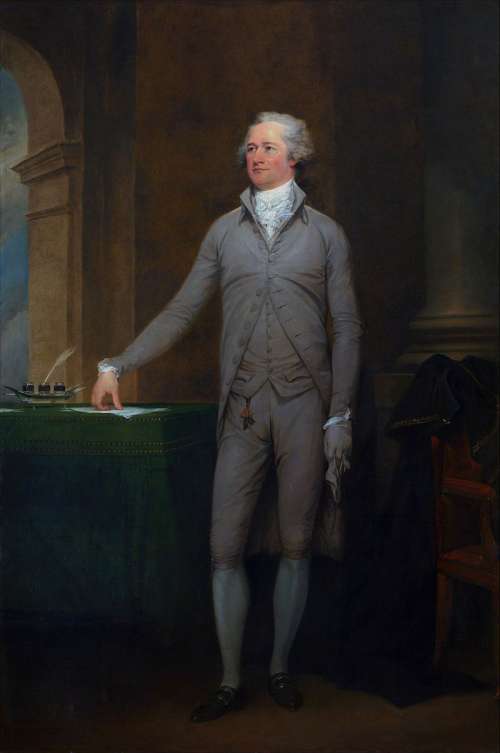
John Adams was running this time with Charles Cotesworth Pinckney of South Carolina the elder brother of candidate Thomas Pinckney from the 1796 election. Hamilton now toured New England, again urging northern electors to hold firm for Pinckney in the renewed hope of making Pinckney president; and he again intrigued in South Carolina. Hamilton's ideas involved coaxing middle-state Federalists to assert their non-support for Adams if there was no support for Pinckney and writing to more of the modest supports of Adams concerning his supposed misconduct while president. Hamilton expected to see southern states such as the Carolinas cast their votes for Pinckney and Jefferson, and would result in the former being ahead of both Adams and Jefferson.
In accordance with the second of the aforementioned plans, and a recent personal rift with Adams, Hamilton wrote a pamphlet called Letter from Alexander Hamilton, Concerning the Public Conduct and Character of John Adams, Esq. President of the United States that was highly critical of him, though it closed with a tepid endorsement. He mailed this to two hundred leading Federalists; when a copy fell into the Democratic-Republicans' hands, they printed it. This hurt Adams's 1800 reelection campaign and split the Federalist Party, virtually assuring the victory of the Democratic-Republican Party, led by Jefferson, in the election of 1800; it destroyed Hamilton's position among the Federalists.
Jefferson had beaten Adams, but both he and Aaron Burr, had received 73 votes in the Electoral College Adams finished in third place, Pinckney in fourth, and Jay received one vote. With Jefferson and Burr tied, the United States House of Representatives had to choose between the two men. Several Federalists who opposed Jefferson supported Burr, and for the first 35 ballots, Jefferson was denied a majority. Before the 36th ballot, Hamilton threw his weight behind Jefferson, supporting the arrangement reached by James A. Bayard of Delaware, in which five Federalist Representatives from Maryland and Vermont abstained from voting, allowing those states' delegations to go for Jefferson, ending the impasse and electing Jefferson president rather than Burr.
Even though Hamilton did not like Jefferson and disagreed with him on many issues, he viewed Jefferson as the lesser of two evils. Hamilton spoke of Jefferson as being "by far not so a dangerous man", and that Burr was a "mischievous enemy" to the principle measure of the past administration. It was for that reason, along with the fact that Burr was a northerner and not a Virginian, that many Federalist Representatives voted for him.
Hamilton wrote an exceeding number of letters to friends in Congress to convince the members to see otherwise. The Federalists rejected Hamilton's diatribe as reasons to not vote for Burr. Nevertheless, Burr would become Vice President of the United States. When it became clear that Jefferson had developed his own concerns about Burr and would not support his return to the vice presidency, Burr sought the New York governorship in 1804 with Federalist support, against the Jeffersonian Morgan Lewis, but was defeated by forces including Hamilton.
Duel with Burr and death
Soon after the 1804 gubernatorial election in New York—in which Morgan Lewis, greatly assisted by Hamilton, defeated Aaron Burr—the Albany Register published Charles D. Cooper's letters, citing Hamilton's opposition to Burr and alleging that Hamilton had expressed "a still more despicable opinion" of the Vice President at an upstate New York dinner party. Cooper claimed that the letter was intercepted after relaying the information, but stated he was "unusually cautious" in recollecting the information from the dinner.
Burr, sensing an attack on his honor, and recovering from his defeat, demanded an apology in letter form. Hamilton wrote a letter in response and ultimately refused because he could not recall the instance of insulting Burr. Hamilton would also have been accused of recanting Cooper's letter out of cowardice. After a series of attempts to reconcile were to no avail, a duel was arranged through liaisons on June 27, 1804.

The concept of honor was fundamental to Hamilton's vision of himself and of the nation. Historians have noted, as evidence of the importance that honor held in Hamilton's value system, that Hamilton had previously been a party to seven "affairs of honor" as a principal, and to three as an advisor or second. Such affairs were often concluded prior to reaching their final stage, a duel.
Before the duel, Hamilton wrote a defense of his decision to duel while at the same time intending to "throw away" his shot. Hamilton viewed his roles of being a father and husband, putting his creditors at risk, placing his family's welfare in jeopardy and his moral and religious stances as reasons not to duel, but he felt it impossible to avoid due to having made attacks on Burr which he was unable to recant, and because of Burr's behavior prior to the duel. He attempted to reconcile his moral and religious reasons and the codes of honor and politics. He intended to accept the duel in order to satisfy his morals, and throw away his fire to satisfy his political codes. His desire to be available for future political matters also played a factor.
The duel began at dawn on July 11, 1804, along the west bank of the Hudson River on a rocky ledge in Weehawken, New Jersey. Coincidentally, the duel took place relatively close to the location of the duel that had ended the life of Hamilton's eldest son, Philip, three years earlier. After the seconds had measured the paces, Hamilton, according to both William P. Van Ness and Burr, raised his pistol "as if to try the light" and had to wear his glasses to prevent his vision from being obscured. Hamilton also refused the hairspring set of dueling pistols needing less trigger pressure offered by Nathaniel Pendleton.
Vice President Burr shot Hamilton, delivering what proved to be a fatal wound. Hamilton's shot broke a tree branch directly above Burr's head. Neither of the seconds, Pendleton nor Van Ness, could determine who fired first, as each claimed that the other man had fired first.

Soon after, they measured and triangulated the shooting, but could not determine from which angle Hamilton had fired. Burr's shot hit Hamilton in the lower abdomen above his right hip. The bullet ricocheted off Hamilton's second or third false rib, fracturing it and causing considerable damage to his internal organs, particularly his liver and diaphragm, before becoming lodged in his first or second lumbar vertebra. The biographer Ron Chernow considers the circumstances to indicate that, after taking deliberate aim, Burr fired second, while the biographer James Earnest Cooke suggests that Burr took careful aim and shot first, and Hamilton fired while falling, after being struck by Burr's bullet.
The paralyzed Hamilton was immediately attended by the same surgeon who tended Phillip Hamilton, and ferried to the Greenwich Village boarding house of his friend William Bayard Jr., who had been waiting on the dock. After final visits from his family and friends and considerable suffering for at least 31 hours, Hamilton died at two o'clock the following afternoon, July 12, 1804, at Bayard's home just below the present Gansevoort Street. Gouverneur Morris gave the eulogy at his funeral and secretly established a fund to support his widow and children. Hamilton was buried in the Trinity Churchyard Cemetery in Manhattan.
Personal life
Married life
While Hamilton was stationed in Morristown, New Jersey, in the winter of December 1779 – March 1780, he met Elizabeth Schuyler, a daughter of General Philip Schuyler and Catherine Van Rensselaer. The two were married on December 14, 1780, at the Schuyler Mansion in Albany, New York.

Elizabeth and Alexander Hamilton had eight children, though there is often confusion because two sons were named Philip:
- Philip 1782–1801, died in a duel, just as his father would three years later.
- Angelica 1784–1857
- Alexander Jr. 1786–1875
- James Alexander 1788–1878
- John Church 1792–1882
- William Stephen 1797–1850
- Eliza 1799–1859
- Philip, also called Little Phil 1802–1884, named after his older brother who had been killed in a duel the previous year
After Hamilton's death in 1804, Elizabeth endeavored to preserve his legacy. She re-organized all of Alexander's letters, papers, and writings with the help of her son, John Church Hamilton, and persevered through many setbacks in getting his biography published. She was so devoted to Alexander's memory that she wore a small package around her neck containing the pieces of a sonnet which Alexander wrote for her during the early days of their courtship.
Hamilton was also close to Elizabeth's sisters. During his lifetime he was even rumored to have had an affair with his wife's older sister, Angelica, who, three years before Hamilton's marriage to Elizabeth, had eloped with John Barker Church, an Englishman who made a fortune in North America during the Revolution and later returned to Europe with his wife and children between 1783 and 1797. Even though the style of their correspondence during Angelica's fourteen-year residence in Europe was flirtatious, modern historians like Chernow and Fielding agree that despite contemporary gossip there is no conclusive evidence that Hamilton's relationship with Angelica was ever physical or went beyond a strong affinity between in-laws. Hamilton also maintained a correspondence with Elizabeth's younger sister Margarita, nicknamed Peggy, who was the recipient of his first letters praising her sister Elizabeth at the time of his courtship in early 1780.
Religion
Hamilton's religious faith
As a youth in the West Indies, Hamilton was an orthodox and conventional Presbyterian of the "New Light" evangelical type as opposed to the "Old Light" Calvinists; he was taught there by a student of John Witherspoon, a moderate of the New School. He wrote two or three hymns, which were published in the local newspaper. Robert Troup, his college roommate, noted that Hamilton was "in the habit of praying on his knees night and morning."
According to Gordon Wood, Hamilton dropped his youthful religiosity during the Revolution and became "a conventional liberal with theistic inclinations who was an irregular churchgoer at best"; however, he returned to religion in his last years. Chernow wrote that Hamilton was nominally an Episcopalian, but:
[H]e was not clearly affiliated with the denomination and did not seem to attend church regularly or take communion. Like Adams, Franklin, and Jefferson, Hamilton had probably fallen under the sway of deism, which sought to substitute reason for revelation and dropped the notion of an active God who intervened in human affairs. At the same time, he never doubted God's existence, embracing Christianity as a system of morality and cosmic justice.
Stories were circulated that Hamilton had made two quips about God at the time of the Constitutional Convention in 1787. During the French Revolution, he displayed a utilitarian approach to using religion for political ends, such as by maligning Jefferson as "the atheist," and insisting that Christianity and Jeffersonian democracy were incompatible. After 1801, Hamilton further attested his belief in Christianity, proposing a Christian Constitutional Society in 1802 to take hold of "some strong feeling of the mind" to elect "fit men" to office, and advocating "Christian welfare societies" for the poor. After being shot, Hamilton spoke of his belief in God's mercy.
On his deathbed, Hamilton asked the Episcopal Bishop of New York, Benjamin Moore, to give him holy communion. Moore initially declined to do so, on two grounds: that to participate in a duel was a mortal sin, and that Hamilton, although undoubtedly sincere in his faith, was not a member of the Episcopalian denomination. After leaving, Moore was persuaded to return that afternoon by the urgent pleas of Hamilton's friends, and upon receiving Hamilton's solemn assurance that he repented for his part in the duel, Moore gave him communion. Bishop Moore returned the next morning, stayed with Hamilton for several hours until his death, and conducted the funeral service at Trinity Church.
Relationship with Jews and Judaism
Hamilton's birthplace on the island of Nevis had a large Jewish community, constituting one quarter of Charlestown's white population by the 1720s. He came into contact with Jews on a regular basis; as a small boy, he was tutored by a Jewish schoolmistress, and had learned to recite the Ten Commandments in the original Hebrew.
Hamilton exhibited a degree of respect for Jews that was described by Chernow as "a life-long reverence." He believed that Jewish achievement was a result of divine providence:
The state and progress of the Jews, from their earliest history to the present time, has been so entirely out of the ordinary course of human affairs, is it not then a fair conclusion, that the cause also is an extraordinary one—in other words, that it is the effect of some great providential plan? The man who will draw this conclusion, will look for the solution in the Bible. He who will not draw it ought to give us another fair solution.
Based on the phonetic similarity of "Lavien" to a common Jewish surname, it has often been suggested that the first husband of Hamilton's mother, Rachael Fawcett, a German or Dane named Johann Michael Lavien, was Jewish or of Jewish descent. On this foundation, historian Andrew Porwancher, a self-acknowledged "lone voice" whose "findings clash with much of the received wisdom on Hamilton", has promoted a theory that Hamilton himself was Jewish. Porwancher argues that Hamilton's mother French Huguenot on her father's side must have converted to Judaism before marrying Lavien, and that even after her separation and bitter divorce from Lavien, she would still have raised her children by James Hamilton as Jews.
Legacy
Hamilton's interpretations of the Constitution set forth in the Federalist Papers remain highly influential, as seen in scholarly studies and court decisions.
Although the Constitution was ambiguous as to the exact balance of power between national and state governments, Hamilton consistently took the side of greater federal power at the expense of the states. As Secretary of the Treasury, he established—against the intense opposition of Secretary of State Jefferson—the country's first de facto central bank. Hamilton justified the creation of this bank, and other increased federal powers, under Congress's constitutional powers to issue currency, to regulate interstate commerce, and to do anything else that would be "necessary and proper" to enact the provisions of the Constitution.

On the other hand, Jefferson took a stricter view of the Constitution. Parsing the text carefully, he found no specific authorization for a national bank. This controversy was eventually settled by the Supreme Court of the United States in McCulloch v. Maryland, which in essence adopted Hamilton's view, granting the federal government broad freedom to select the best means to execute its constitutionally enumerated powers, specifically the doctrine of implied powers. Nevertheless, the American Civil War and the Progressive Era demonstrated the sorts of crises and politics Hamilton's administrative republic sought to avoid.
Hamilton's policies as Secretary of the Treasury greatly affected the United States government and still continue to influence it. His constitutional interpretation, specifically of the Necessary and Proper Clause, set precedents for federal authority that are still used by the courts and are considered an authority on constitutional interpretation. The prominent French diplomat Charles Maurice de Talleyrand, who spent 1794 in the United States, wrote, "I consider Napoleon, Fox, and Hamilton the three greatest men of our epoch, and if I were forced to decide between the three, I would give without hesitation the first place to Hamilton", adding that Hamilton had intuited the problems of European conservatives.
Opinions of Hamilton have run the gamut as both John Adams and Thomas Jefferson viewed him as unprincipled and dangerously aristocratic. Hamilton's reputation was mostly negative in the eras of Jeffersonian democracy and Jacksonian democracy. By the Progressive era, Herbert Croly, Henry Cabot Lodge, and Theodore Roosevelt praised his leadership of a strong government. Several nineteenth- and twentieth-century Republicans entered politics by writing laudatory biographies of Hamilton.
In more recent years, according to Sean Wilentz, favorable views of Hamilton and his reputation have decidedly gained the initiative among scholars, who portray him as the visionary architect of the modern liberal capitalist economy and of a dynamic federal government headed by an energetic executive. Modern scholars favoring Hamilton have portrayed Jefferson and his allies, in contrast, as naïve, dreamy idealists. The older Jeffersonian view attacked Hamilton as a centralizer, sometimes to the point of accusations that he advocated monarchy.
Monuments and memorials
U.S. Army unit lineage
The lineage of Hamilton's New York Provincial Company of Artillery has been perpetuated in the United States Army in a series of units nicknamed "Hamilton's Own". It was carried as of 2010 by the 1st Battalion, 5th Field Artillery Regiment. In the Regular Army, it is the oldest unit and the only one with credit for the Revolutionary War.
Portraits on currency and postage stamps
Since the beginning of the American Civil War, Hamilton has been depicted on more denominations of U.S. currency than anyone else. He has appeared on the $2, $5, $10, $20, $50, and $1,000 notes. Hamilton also appears on the $500 Series EE Savings Bond.
Hamilton's portrait has been featured on the front of the U.S. $10 bill since 1928. The source of the engraving is John Trumbull's 1805 portrait of Hamilton, in the portrait collection of New York City Hall. In June 2015, the U.S. Treasury announced a decision to replace the engraving of Hamilton with that of a woman. Before the bill was actually redesigned, the decision was changed due to the unanticipated popular success of the 2015 Broadway musical Hamilton.

The first postage stamp to honor Hamilton was issued by the U.S. Post Office in 1870. The portrayals on the 1870 and 1888 issues are from the same engraved die, which was modeled after a bust of Hamilton by Italian sculptor Giuseppe Ceracchi. The Hamilton 1870 issue was the first U.S. postage stamp to honor a Secretary of the Treasury. The three-cent red commemorative issue, which was released on the 200th anniversary of Hamilton's birth in 1957, includes a rendition of the Federal Hall building, located in New York City. On March 19, 1956, the United States Postal Service issued the $5 Liberty Issue postage stamp honoring Hamilton.
The Grange
The Grange is the only home Alexander Hamilton ever owned. It is a Federal style mansion designed by John McComb Jr.. It was built on Hamilton's 32-acre country estate in Hamilton Heights in upper Manhattan, and was completed in 1802. Hamilton named the house "The Grange" after the estate of his grandfather Alexander in Ayrshire, Scotland. The house remained in the family until 1833, when his widow Eliza sold it to Thomas E. Davis, a British-born real estate developer, for $25,000. Part of the proceeds were used by Eliza to purchase a new townhouse from Davis in Greenwich Village now known as the Hamilton-Holly House, where Eliza lived until 1843 with her grown children Alexander and Eliza, and their spouses.
The Grange was first moved from its original location in 1889, and was moved again in 2008 to a spot in St. Nicholas Park in Hamilton Heights, on land that was once part of the Hamilton estate. The historic structure, now designated as the Hamilton Grange National Memorial, was restored to its original 1802 appearance in 2011, and is maintained by the National Park Service.
Colleges and universities
Columbia University, Hamilton's alma mater, has official memorials to Hamilton on its campus in New York City. The college's main classroom building for the humanities is Hamilton Hall, and a large statue of Hamilton stands in front of it. The university press has published his complete works in a multivolume letterpress edition. Columbia University's student group for ROTC cadets and Marine officer candidates is named the Alexander Hamilton Society.
Hamilton served as one of the first trustees of the Hamilton-Oneida Academy in Clinton, New York, which was renamed Hamilton College in 1812, after receiving a college charter.
The main administration building of the United States Coast Guard Academy in New London, Connecticut, is named Hamilton Hall to commemorate Hamilton's creation of the United States Revenue Cutter Service, one of the predecessor services of the United States Coast Guard.
Buildings and public art
At Hamilton's birthplace in Charlestown, Nevis, the Alexander Hamilton Museum is located in Hamilton House, a Georgian-style building rebuilt on the foundations of the house where Hamilton is believed to have been born and to have lived during his childhood. The second floor of Hamilton House hosts the offices and meeting place of the island's legislature, the Nevis Island Assembly.
In 1880, Hamilton's son John Church Hamilton commissioned Carl Conrads to sculpt a granite statue, now located in Central Park, New York City.
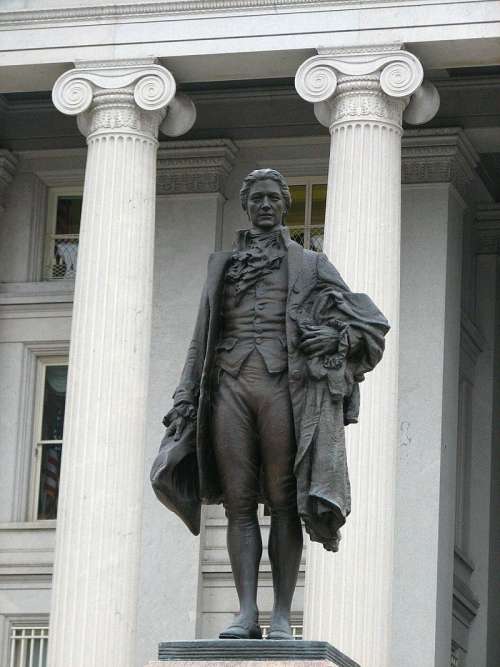
A bronze statue of Hamilton by Franklin Simmons, dated 1905–06, overlooks the Great Falls of the Passaic River at Paterson Great Falls National Historical Park in New Jersey.
In 1990, the U.S. Custom House in New York City was renamed after Hamilton.
The U.S. Army's Fort Hamilton in Brooklyn is named after Hamilton.
In Washington, D.C., the south terrace of the Treasury Building features a statue of Hamilton by James Earle Fraser, which was dedicated on May 17, 1923.
In Chicago, a thirteen-foot tall statue of Hamilton by sculptor John Angel was cast in 1939. It was not installed at Lincoln Park until 1952, due to problems with a controversial 78-foot tall columned shelter designed for it and later demolished in 1993. The statue has remained on public display, and was restored and regilded in 2016.
A bronze sculpture of Hamilton titled The American Cape, by Kristen Visbal, was unveiled at Journal Square in downtown Hamilton, Ohio, in October 2004.
Geographic sites
Numerous American towns and cities, including Hamilton, Kansas; Hamilton, Missouri; Hamilton, Massachusetts; and Hamilton, Ohio; were named in honor of Alexander Hamilton. In eight states, counties have been named for Hamilton:
On slavery
Hamilton is not known to have ever owned slaves, although members of his family were slave owners. At the time of her death, Hamilton's mother owned two slaves named Christian and Ajax, and she had written a will leaving them to her sons; however, due to their illegitimacy, Hamilton and his brother were held ineligible to inherit her property, and never took ownership of the slaves. Later, as a youth in St. Croix, Hamilton worked for a company trading in commodities that included slaves. During his career, Hamilton did occasionally purchase or sell slaves for others as their legal representative, and one of Hamilton's grandsons interpreted some of these journal entries as being purchases for himself.
By the time of Hamilton's early participation in the American Revolution, his abolitionist sensibilities had become evident. Hamilton was active during the Revolution in trying to raise black troops for the army, with the promise of freedom. In the 1780s and 1790s, he generally opposed pro-slavery southern interests, which he saw as hypocritical to the values of the American Revolution. In 1785, he joined his close associate John Jay in founding the New-York Society for Promoting the Manumission of Slaves, and Protecting Such of Them as Have Been, or May be Liberated, the main anti-slavery organization in New York. The society successfully promoted the abolition of the international slave trade in New York City and passed a state law to end slavery in New York through a decades-long process of emancipation, with a final end to slavery in the state on July 4, 1827.
At a time when most white leaders doubted the capacity of blacks, Hamilton believed slavery was morally wrong and wrote that "their natural faculties are as good as ours." Unlike contemporaries such as Jefferson, who considered the removal of freed slaves to a western territory, the West Indies, or Africa to be essential to any plan for emancipation, Hamilton pressed for emancipation with no such provisions. Hamilton and other Federalists supported Toussaint Louverture's revolution against France in Haiti, which had originated as a slave revolt. Hamilton's suggestions helped shape the Haitian constitution. In 1804 when Haiti became the Western Hemisphere's first independent state with a majority of the population being black, Hamilton urged closer economic and diplomatic ties.
On economics
Hamilton has been portrayed as the "patron saint" of the American School of economic philosophy that, according to one historian, dominated economic policy after 1861. He firmly supported government intervention in favor of business, after the manner of Jean-Baptiste Colbert, as early as the fall of 1781. Hamilton opposed the British ideas of free trade, which he believed skewed benefits to colonial and imperial powers, in favor of protectionism, which he believed would help develop the emerging economy of the fledgling polity. Henry C. Carey was inspired by his writings. Hamilton influenced the ideas and work of the German Friedrich List. In Hamilton's view, a strong executive, linked to the support of the people, could become the linchpin of an administrative republic. The dominance of executive leadership in the formulation and carrying out of policy was essential to resist the deterioration of republican government. Ian Patrick Austin has explored the similarities between Hamiltonian recommendations and the development of Meiji Japan after 1860.
In popular culture
Hamilton has appeared as a significant figure in popular works of historical fiction, including many that focused on other American political figures of his time. In comparison to other Founding Fathers, Hamilton attracted relatively little attention in American popular culture in the 20th century, apart from his portrait on the $10 bill.
Theatre and film
- A stage play called Hamilton, which ran on Broadway in 1917, was co-written by George Arliss, who played the title role. Arliss reprised the role of Hamilton in a 1931 film based on the stage play.
- In 2015, Hamilton's profile in popular culture was significantly raised by the hit Broadway show Hamilton: An American Musical, written by Lin-Manuel Miranda, who débuted the title role. The musical, which Miranda based on a biography by Ron Chernow, was described by The New Yorker as "an achievement of historical and cultural reimagining. In Miranda's telling, the headlong rise of one self-made immigrant becomes the story of America." The Off-Broadway production of Hamilton won the 2015 Drama Desk Award for Outstanding Musical as well as seven other Drama Desk Awards. In 2016, Hamilton received the Pulitzer Prize for Drama, and set a record with 16 Tony Award nominations, of which the show won 11, including Best Musical. An Obama administration plan to replace Hamilton on the $10 bill was shelved due in part to the popularity of the musical.
- On July 3, 2020, Disney+ released the movie Hamilton, an authorized film of the Broadway stage production performed by the original cast.
Literature
- Novelist Gertrude Atherton wrote a fictionalized biography, The Conqueror, Being the True and Romantic Story of Alexander Hamilton, published in 1902.
- Gore Vidal's 1973 historical novel Burr included Hamilton as a major character.
- L. Neil Smith cast Hamilton as a principal villain in the historical background of his 1980 libertarian alternative history novel The Probability Broach and its sequels in the North American Confederacy series.
Television
- The Adams Chronicles, a 1976 PBS miniseries, featured Hamilton in a major recurring role.
- George Washington II: The Forging of a Nation, a 1986 TV series, included Hamilton as a main character, portrayed by Richard Bekins.
- In the 2000 A&E TV movie The Crossing, about Valley Forge, Hamilton is played by Canadian actor Steven McCarthy and is portrayed memorably at the start of the Battle of Trenton.
- John Adams, a 2008 HBO miniseries in seven parts, featured Rufus Sewell as Hamilton in two episodes.
- Legends & Lies, a documentary series produced by Bill O'Reilly, featured Alexander McPherson as Hamilton in eight episodes that aired on Fox News in 2016.
- Turn: Washington's Spies, an AMC period drama, included Sean Haggerty in a recurring role as Hamilton in its final two seasons 2016–2017.
Other
- An organized group of faithless electors in the 2016 United States presidential election called themselves "Hamilton electors", seeking to link their efforts to Hamilton's Federalist No. 68.
More facts
The Duel: A Captivating Guide to the Lives of Alexander Hamilton and Aaron Burr
Alexander Hamilton (2020)
American Experience (1988-)

